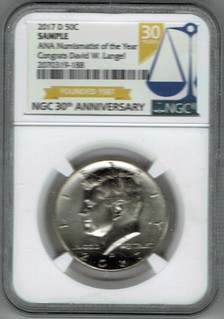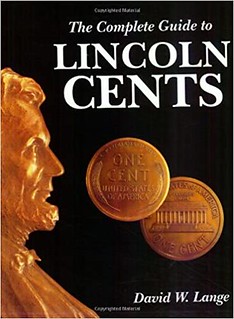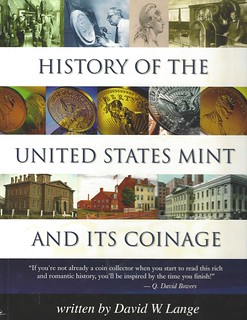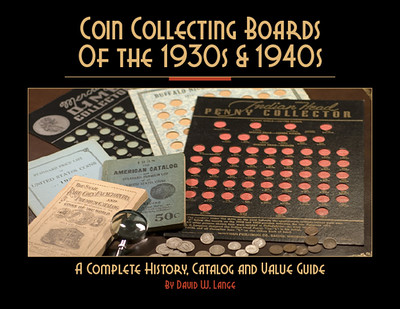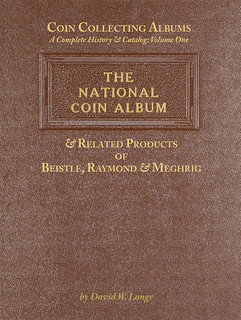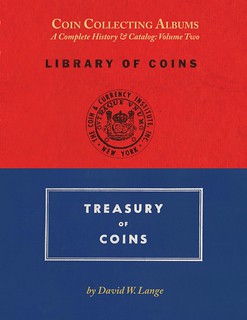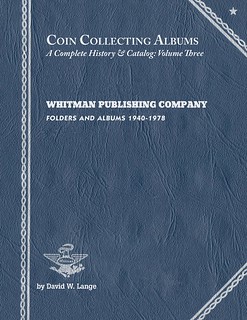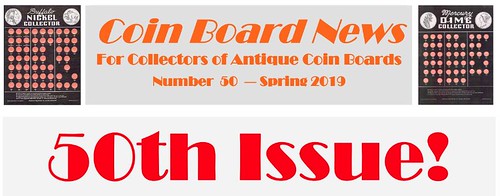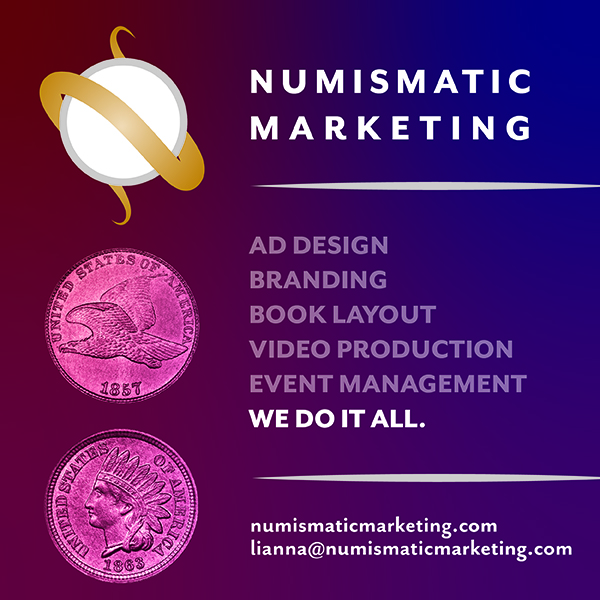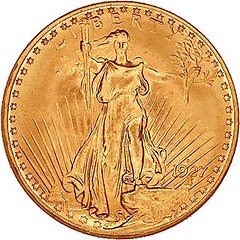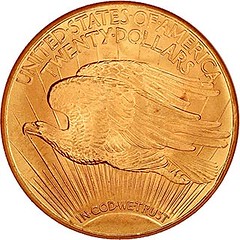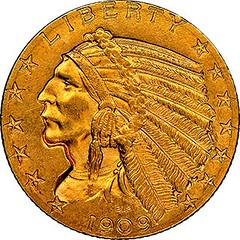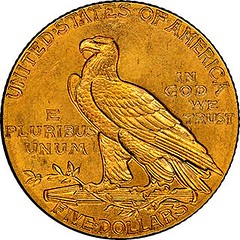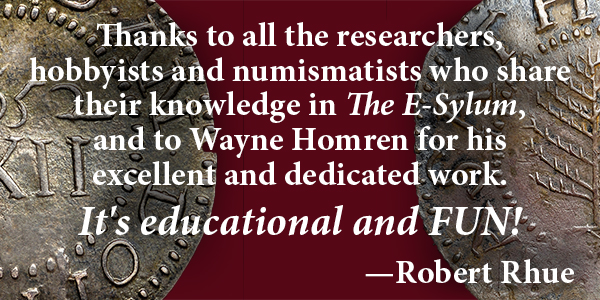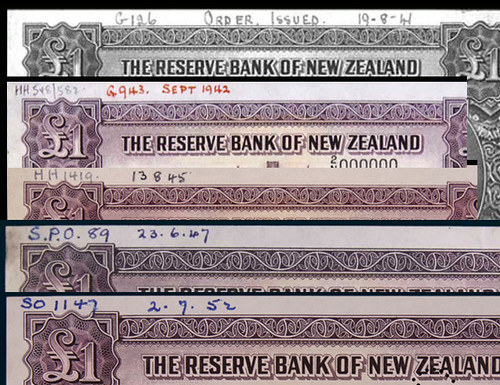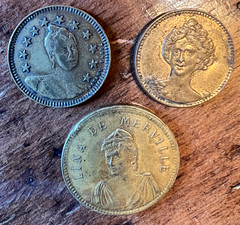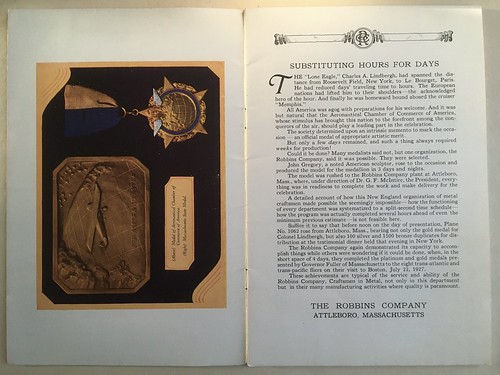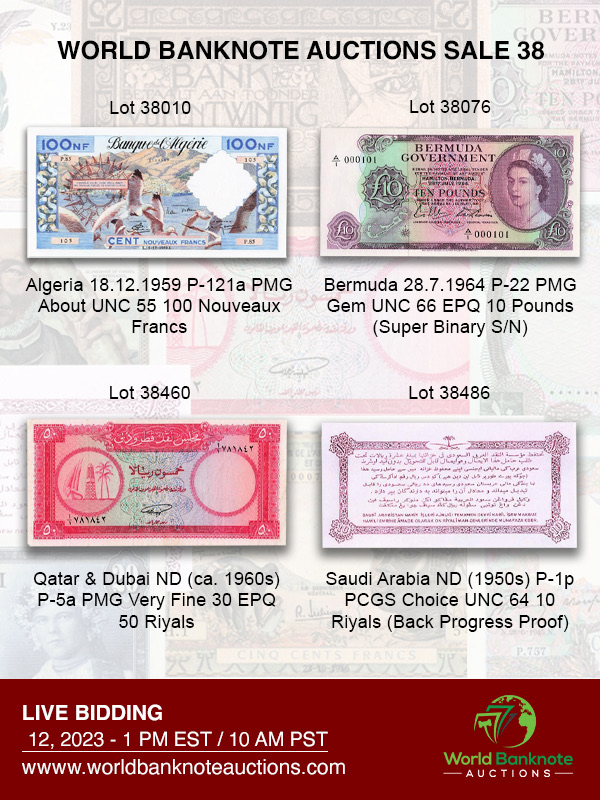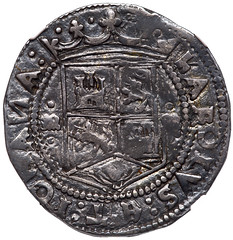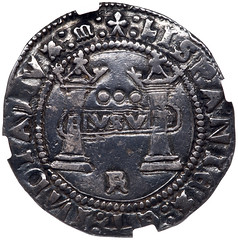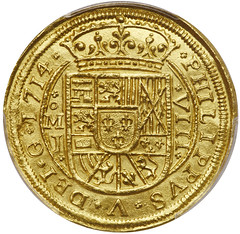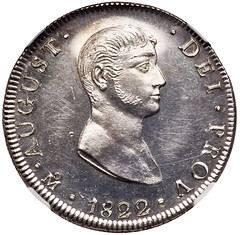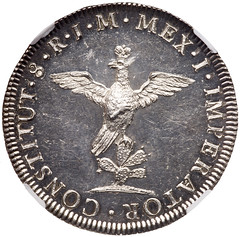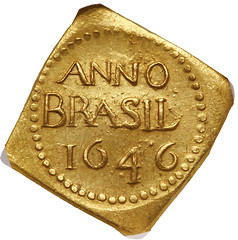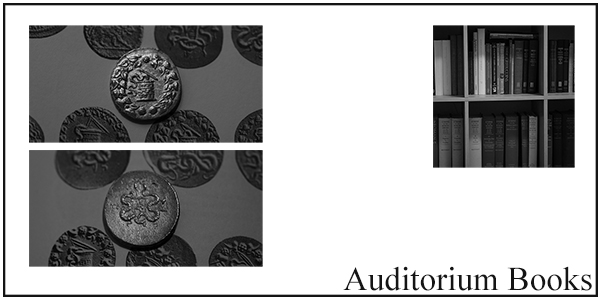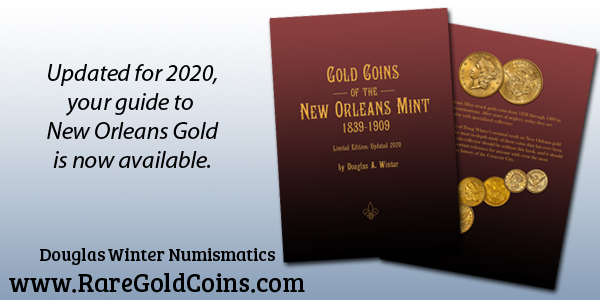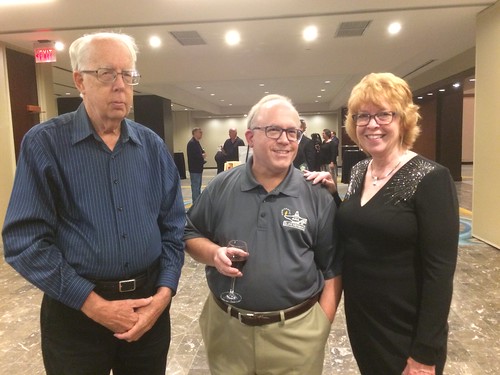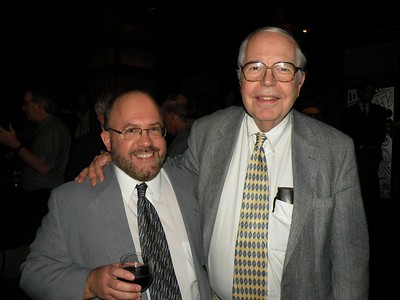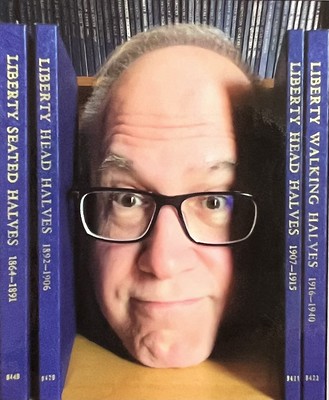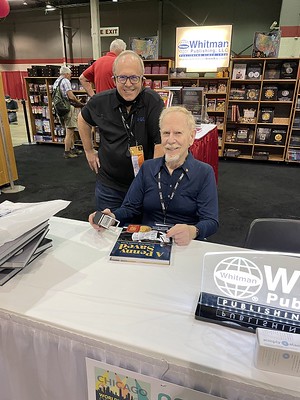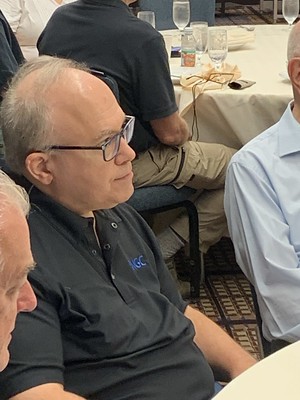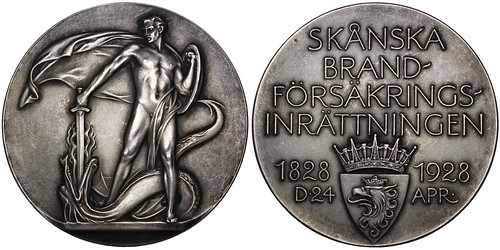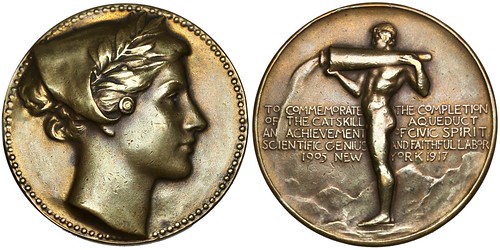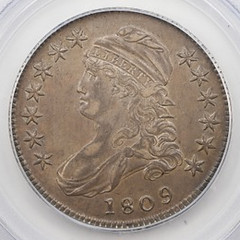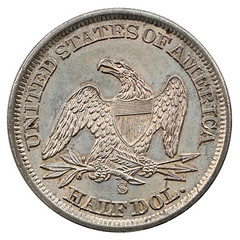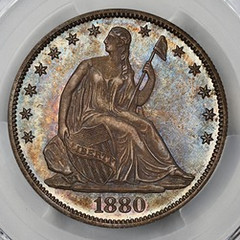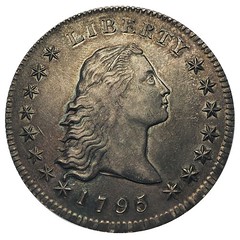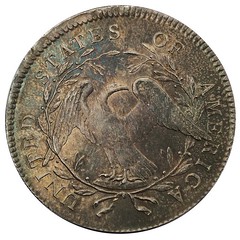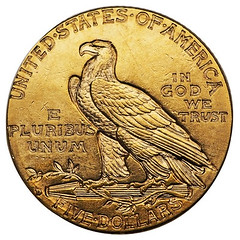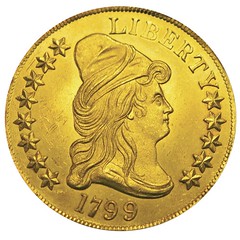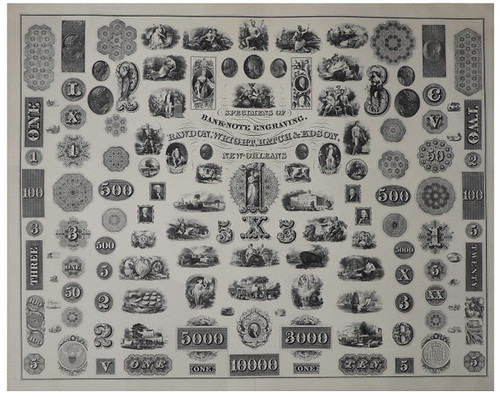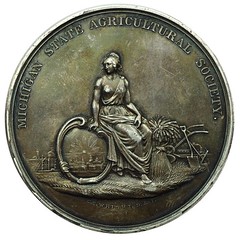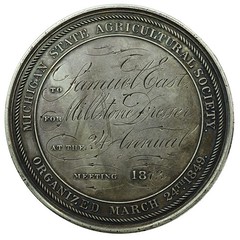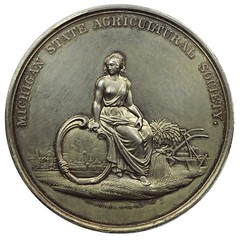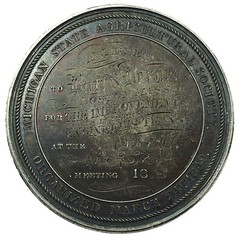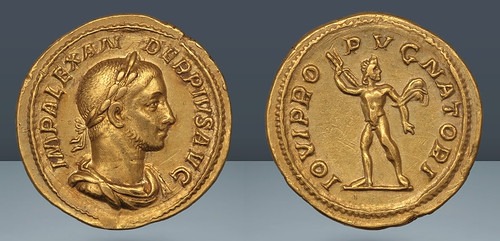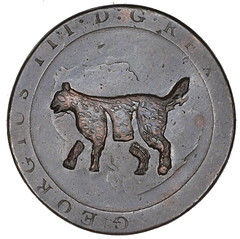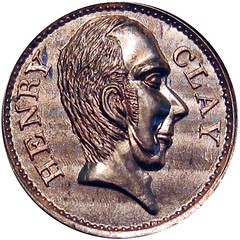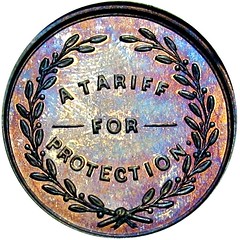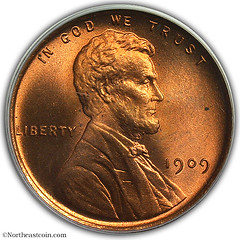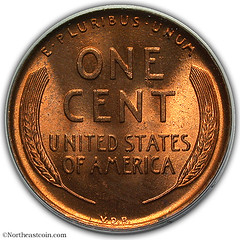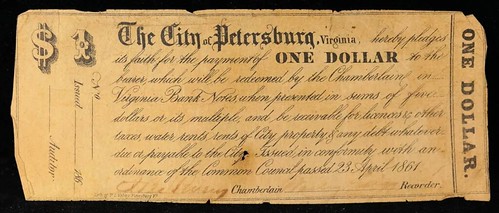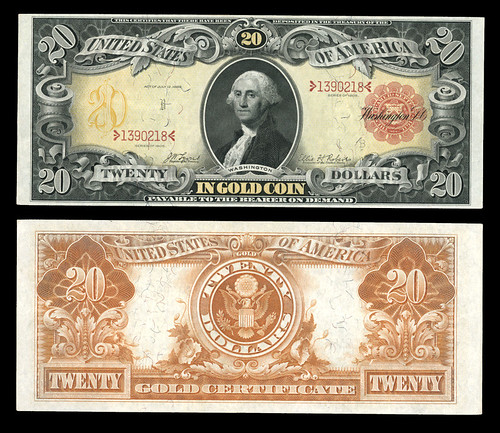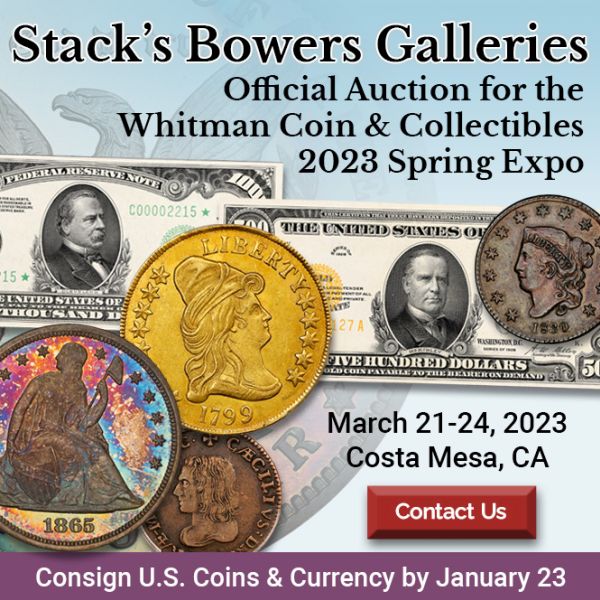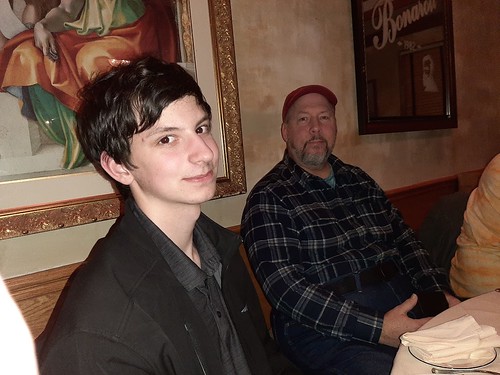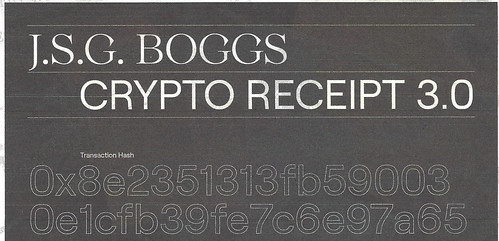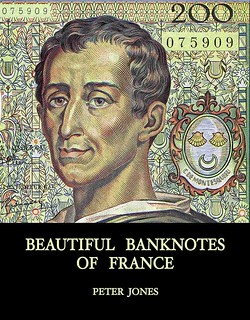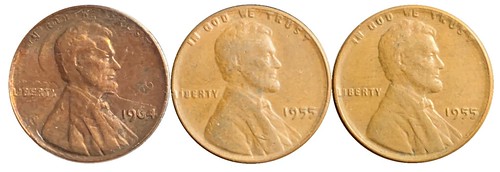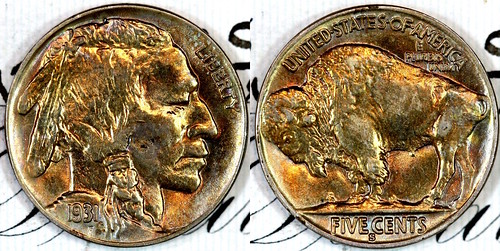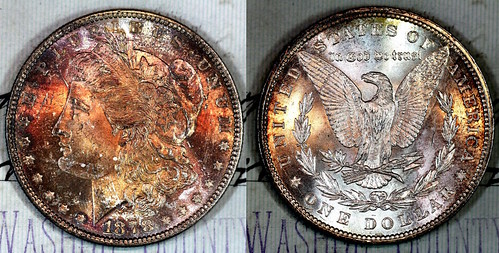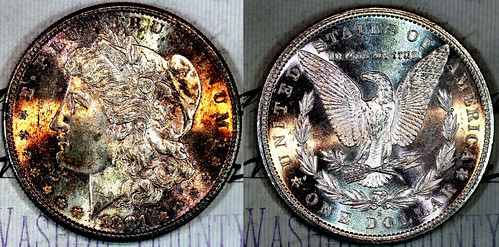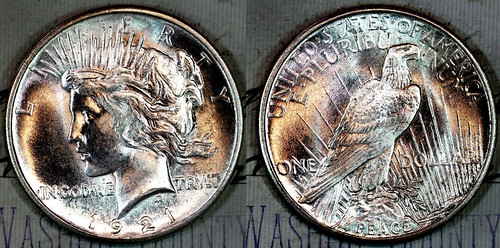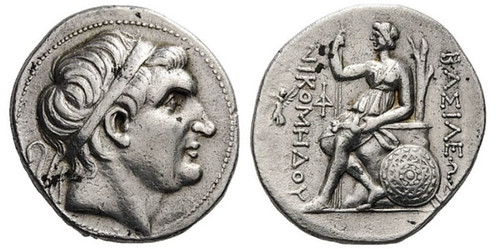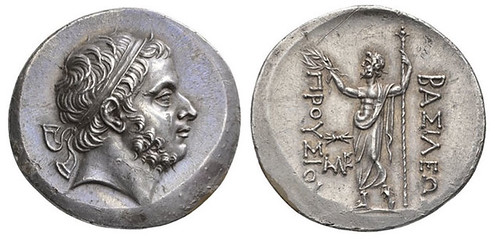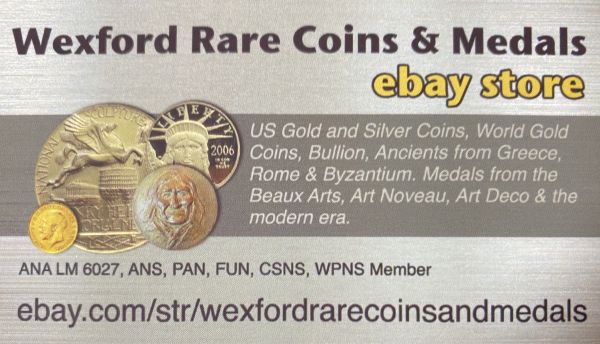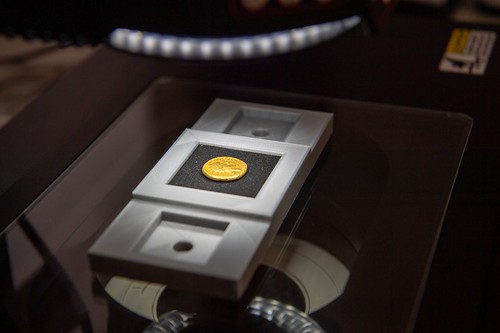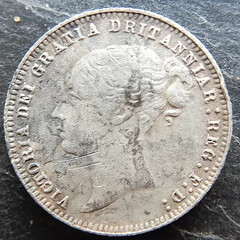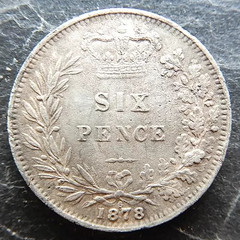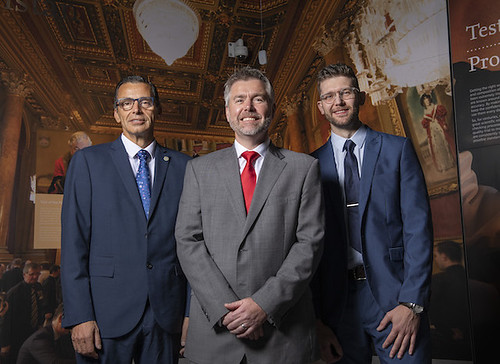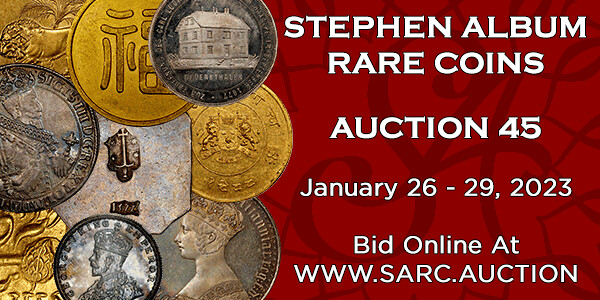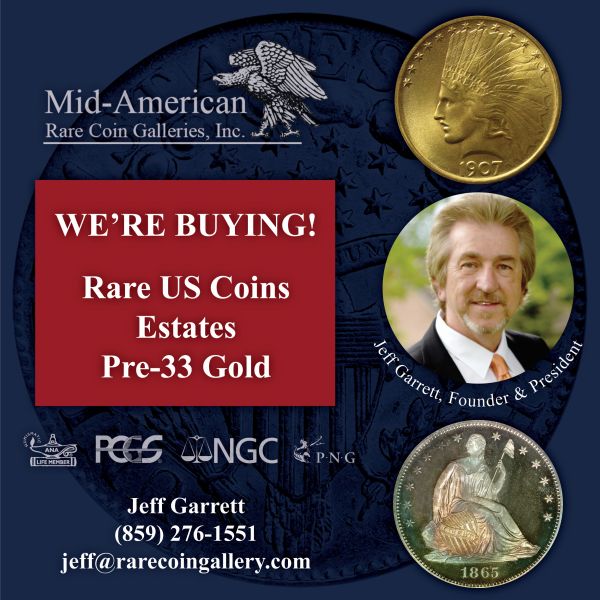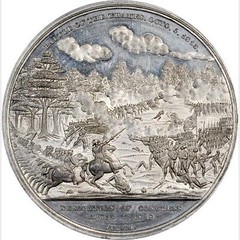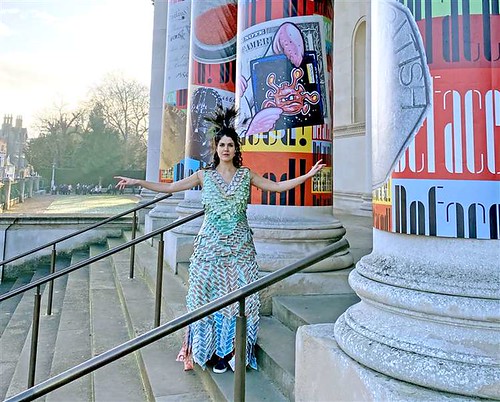
Visit our NBS Sponsors




About UsThe Numismatic Bibliomania Society is a non-profit association devoted to the study and enjoyment of numismatic literature. For more information please see our web site at coinbooks.org SubscriptionsThose wishing to become new E-Sylum subscribers (or wishing to Unsubscribe) can go to the following web page link MembershipThere is a membership application available on the web site Membership Application To join, print the application and return it with your check to the address printed on the application. Print/Digital membership is $40 to addresses in the U.S., and $60 elsewhere. A digital-only membership is available for $25. For those without web access, write to: Charles Heck, Treasurer AsylumFor Asylum mailing address changes and other membership questions, contact Chuck at this email address: treasurer@coinbooks.org SubmissionsTo submit items for publication in The E-Sylum, write to the Editor at this address: whomren@gmail.com BUY THE BOOK BEFORE THE COINSale CalendarWatch here for updates! |
- WAYNE'S WORDS: THE E-SYLUM JANUARY 22, 2023
- KOLBE & FANNING BUY OR BID SALE NUMBER 20
- NEW BOOK: LOS TLACOS DE VALLADOLID-MORELIA
- DAVID W. LANGE (1958-2023)
- NNP 1827 WILLIAM BROWN SOTHEBY'S CATALOG
- VIDEO: R.S. YEOMAN
- CHANGING TRENDS IN NUMISMATICS
- NOTES FROM E-SYLUM READERS: JANUARY 22, 2023
- TYRANT COLLECTION MEXICO-BRAZIL EXHIBIT
- NEW INTERNATIONAL MONEY EXPO (IMEX)
- VOCABULARY TERM: MINIATURE
- DAVID W. LANGE – RECOLLECTIONS
- REMEMBERING DAVID W. LANGE (1958–2023)
- NUMISMAGRAM MEDAL SELECTIONS: JANUARY 2023
- NUMISMATIC AUCTIONS SALE 67 U.S. HIGHLIGHTS
- NUMISMATIC NUGGETS: JANUARY 22, 2023
- WAYNE'S NUMISMATIC DIARY: JANUARY 22, 2023
- COINS OF THE KINGS OF BITHYNIA
- ANOTHER SPONSIAN ARTICLE
- COUNTERFEIT BUST DIME DIE MARRIAGES
- THE 1878 DRITANNIAR SIXPENCE
- PAUL MORGAN APPOINTED KING'S ASSAY MASTER
- 2022 COIN OF THE YEAR CATEGORY WINNERS
- FOIL-WRAPPED COINS
- THE MEDALS OF ISAAC SHELBY
- CAMBRIDGE ACTIVIST'S VENEZUELAN MONEY DRESS
- LOOSE CHANGE: JANUARY 22, 2023
- FEATURED WEBSITE: FRENCH SCULPTURE CENSUS
Click here to read the thin version on the web
Click here to subscribe
Click here to access the complete archive
To comment or submit articles, reply to whomren@gmail.com
Content presented in The E-Sylum is not necessarily researched or independently fact-checked, and views expressed do not necessarily represent those of the Numismatic Bibliomania Society.
WAYNE'S WORDS: THE E-SYLUM JANUARY 22, 2023
 New subscribers this week include:
Ric Burney and
Renato Schindler.
Welcome aboard!
New subscribers this week include:
Ric Burney and
Renato Schindler.
Welcome aboard!
Thank you for reading The E-Sylum. If you enjoy it, please send me the email addresses of friends you think may enjoy it as well and I'll send them a subscription. Contact me at whomren@gmail.com anytime regarding your subscription, or questions, comments or suggestions about our content.
This week we open with a numismatic literature sale, one new book, updates from the Newman Numismatic Portal, and more.
Other topics this week include Sotheby's catalogs, changing trends in numismatics, the Tyrant Collection, auction previews, counterfeit bust dimes, the Dritanniar sixpence, the King's Assay Master, foil-wrapped coins, a fire breathing dragon, Isaac Shelby, R. S. Yeoman, and Dave Lange.
To learn more about one of the good guys, brothel tokens, the Robbins Company, Miniature decorations, the Lager Beer King of London, the Catskill Aqueduct, a 1799 Gold Eagle, medals by Charles Cushing Wright, the Boggs NFTs, the Kings of Bithynia, the 2022 Coin of the Year competition, and the Venezuelan Money Dress, read on. Have a great week, everyone!
Wayne Homren
Editor, The E-Sylum
KOLBE & FANNING BUY OR BID SALE NUMBER 20
Numismatic Booksellers Kolbe & Fanning submitted this announcement of their twentieth "Buy or Bid Sale" which closes on January 30, 2023. Good luck, everyone! -Editor
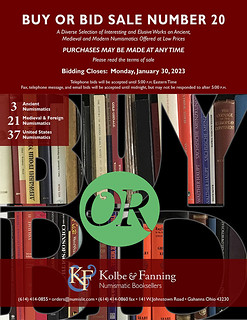 Kolbe & Fanning Numismatic Booksellers have announced our latest
Kolbe & Fanning Numismatic Booksellers have announced our latest Buy or Bid Sale,
which begins now and will close on Monday, January 30, 2023. With hundreds of new additions, the sale focuses on modestly priced books, giving collectors an opportunity to add to their libraries at minimal cost.
The sale includes over 1400 works on ancient, medieval and modern coins, as well as general works, periodicals and sale catalogues. Buy
prices have been kept low to promote sales. To further encourage participation, the firm is offering free domestic shipping to bidders spending at least $300; there is also no packing and processing fee for this sale. Again, please read the Terms of Sale before participating.
As the name of the sale suggests, customers may bid on items they wish to acquire or buy them outright at the published price. The Terms of Sale will give full instructions on how to participate: please read it carefully.
There is no printed catalogue. The PDF catalogue is available now for downloading from the Kolbe & Fanning website at numislit.com. Please send all bids to orders@numislit.com or use the bid sheet included at the end of the PDF catalogue.
To read the complete catalog, see:
https://www.numislit.com/images/upload/kolbefanningbob20.pdf
THE BOOK BAZARRE
NEW BOOK: LOS TLACOS DE VALLADOLID-MORELIA
Adrian Gonzalez Salinas passed along information about a new Mexican numismatic book published last year on the tokens of Valladolid-Morelia. Apparently it's already sold out, but be on the lookout for it in the secondary market. -Editor
 Title: "Los Tlacos de Valladolid-Morelia"
Title: "Los Tlacos de Valladolid-Morelia"
(The Tokens of Valladolid-Morelia)
Author: Leandro Aguilera Villanueva
Dimensions: 16.4 (W) x 22.6 (H) x 0.9 (T) cms
Pages: 135,(1)
Cover: Soft
Year: 2022 (printed August 2022)
Language: Spanish
# of Copies: 100
First edition
A "tlaco" was like a merchant or trade token and its value was an eighth of one real (12.5 / 8 = 1.5625 cents). It circulated in Mexico from the XVI century thru beginning of XX century."Tlacos" means "one half" in nahuatl language.
According to the author:
This book deals, in particular, with "Los Tlacos de Valladolid-Morelia" which were stamped by shopkeepers, landowners and the City Council
to provide small commerce of simple currency. "Tlacos", which caused many inconveniences to commerce, but for more than 300 years they
satisfied the need for fractional currency.
At present, "tlacos" are numismatic pieces that are currently highly sought after by collectors due to their marked rarity and artistic uniqueness, which make them highly appreciated in the national and international market.
Contents:
1) Preface
2) Introduction
3) Chapter 1 - Colonial Monetary System in New Spain (Mexico)
4) Chapter 2 - The Particular Tokens (Tlacos) of Valladolid (Michoacán State)
5) Chapter 3 - The Municipal Tokens of Morelia (Michoacán)
6) Chapter 4 - The Municipal Counterstamps of Valladolid-Morelia
7) Conclusion
8) Appendices
DAVID W. LANGE (1958-2023)
We were all shocked and saddened to learn this week of the passing of researcher, author and longtime E-Sylum contributor David Lange. E-Sylum Feature Writer and American Numismatic Biographies author Pete Smith submitted this bio/obituary. Thank you. Elsewhere in this issue we have Pete's second, more personal article, as well as one by Dennis Tucker. -Editor
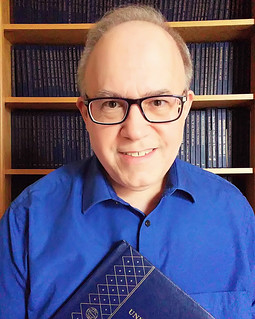 David W. Lange was a popular writer and friendly face at the NGC table during the ANA
conventions. He was born in San Francisco on August 29. 1958. He graduated from San Mateo
College and was employed as a senior design drafter for Pacific Gas and Electric from 1980 to
1994.
David W. Lange was a popular writer and friendly face at the NGC table during the ANA
conventions. He was born in San Francisco on August 29. 1958. He graduated from San Mateo
College and was employed as a senior design drafter for Pacific Gas and Electric from 1980 to
1994.
Dave began collecting coins in 1965 and was active with numismatic organizations in the Bay
Area. He served as president of the Liberty Numismatic Society and the Pacific Coast
Numismatic Society in 1988 to 1989. Later he was president of the California State Numismatic
Society 1993 to 1994. In 1994 he served on M.I.N.T.
(Maintain and Improve a Numismatic
Treasure) which was a mayor's committee to save the old San Francisco Mint Museum. In
addition to collecting U.S. coins series, he collected coinage of the Philippines and wrote that
chapter for the Red Book.
He wrote articles for the local clubs and was editor for The Bulletin of the Pacific Coast
Numismatic Society for 1984 to 1986 and editor for The Journal of the Pacific Coast Numismatic
Society 1986 to 1988. He contributed a column on The Bookworm
during 1984 to 1992.
In 1994 he moved to New Jersey to take a position as director of research for NGC. He served as
president of the New Jersey Numismatic Society during 2000 to 2001. He moved with the
company to Sarasota, Florida.
He married Alba Iris Acosta on August 18, 2001. They issued a commemorative token stating that they were married in Parsippany, New Jersey. The actual location was Mountain Lake, New Jersey. The Patrick Mint struck 1000 of the tokens. Later 99 remainders were slabbed by NGC. The couple was divorced in 2012.
Articles in The Numismatist caught the attention of editor Barbara Gregory who recruited Lange
to write a regular column for The Numismatist, His column Back to Basics
ran from February
1988 to December 1989, followed by No Worse for Wear
January 1990 to December 1992.
After a break he returned with From One to 70
during April 1996 to June 2002 and USA Coin
Album
from July 2002 until August 2022. He also contributed occasionally to the Collector's
Edge
column.
Dave was an instructor at the ANA Summer Seminar for several years teaching a course on
Collecting U. S. Type Coins.
Lange wrote ten books on numismatic topics.
- The Complete Guide to Buffalo Nickels (DLRC Press 1992).
- The Complete Guide to Mercury Dimes (DLRC Press 1993).
- The Complete Guide to Lincoln Cents (DLRC Press 1996).
- History of the United States Mint and its Coinage (Whitman 2005).
- A Guide Book of Modern U. S. Proof Sets (Whitman 2005).
- He collaborated with Richard S. Montgomery on Grading Guide for Modern U. S. Coins (2004).
Lange's special interest was in coin boards, folders and albums and the people who produced them. He formed a publishing company, PennyBoard Press™ to publish a series of books.
- Coin Collecting Boards of the 1930's & 1940's (2007).
- Coin Collecting Albums – A Complete History and Catalog Volume One: The National Coin Album & Related Products of Beistle, Raymond & Meghrig (2013).
- Coin Collecting Albums – A Complete History and Catalog Volume Two: Library of Coins Treasury of Coins (2016).
- Coin Collecting Albums – A Complete History and Catalog Volume Three: Whitman Publishing Company Folders and Albums 1940-1978 (2020).
He also published a quarterly newsletter, Coin Board News.
Lange received honors from several numismatic organizations. He was named a Numismatic News Numismatic Ambassador in 1994. The ANA presented their Lifetime Achievement Award to him in 2009. He was named the ANA Numismatist of the Year in 2017. In 2017 NGC issued a sample slab congratulating David on the award. The Numismatic Literary Guild awarded him their highest honor, The Clemy Award in 2018.
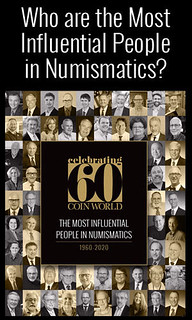 He was on the Coin World list of The Most Influential People in Numismatics 1960-2020 and again in 2022. He was a member of The Rittenhouse Society and Mensa.
He was on the Coin World list of The Most Influential People in Numismatics 1960-2020 and again in 2022. He was a member of The Rittenhouse Society and Mensa.
Lange had a bout with cancer that he survived but was unable to survive a reoccurrence. He was in hospice care and died at home in Bradenton, Florida, on January 16, 2023.
I always looked forward to Dave's emails and seeing him at shows like the Baltimore Whitman Expos. His Coin Board News was a great source of interesting hobby facts which he gladly shared with E-Sylum readers. I knew about his remission and recurrence. His correspondence got fewer and farther between, but he was looking forward to being able to resume visiting shows in the spring. I'd sent him a "How ya Doin'" note just about a week ago, and feared the worst when I didn't hear back. We'll miss you, Dave. Thanks for your hefty contributions to the hobby.
Here's an excerpt from an article posted on the NGC website. -Editor
Lange was one of the world's leading coin experts, an author of numerous books, a recipient of some of the highest honors in numismatics and an integral member of the NGC team.
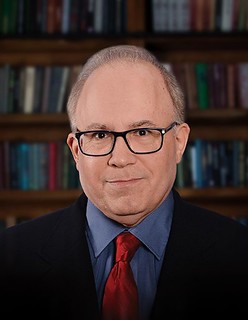 Numismatic Guaranty Company® (NGC®) is deeply saddened by the passing of its longtime Research Director, David W. Lange. One of the world's leading experts on coinage, he passed away on Monday, January 16, 2023, following a battle with cancer.
Numismatic Guaranty Company® (NGC®) is deeply saddened by the passing of its longtime Research Director, David W. Lange. One of the world's leading experts on coinage, he passed away on Monday, January 16, 2023, following a battle with cancer.
"Dave was a talented numismatic researcher and writer, with a great wit," said Mark Salzberg, Chairman of the Certified Collectibles Group. "There aren't many who could stand next to him in his field, and we are endlessly fortunate that he chose to work at NGC. He leaves behind a tremendous legacy that not only touches the NGC family but the entire numismatic community."
"Dave was the quintessential numismatist, and he was one of those rare individuals who could express his incredibly vast and comprehensive knowledge eloquently via the spoken or written word," commented Rick Montgomery, NGC President and Finalizer. "His body of work will be referenced for years to come, and his legacy will be found in the dedication and passion discovered in those works. His was a talent that will be sorely missed in numismatics."
"Fortunately, Dave gave us a large corpus of articles and books both to remember him and to learn from. Even when writing about technical matters, his writing is so elegant and fluid as to seem effortless. This was due to a combination of his natural talent and his true mastery of the subject," said Scott Schechter, NGC Chief Numismatist and Finalizer. "When re-reading his works, those of us who knew him personally get the extra benefit of hearing, in his own voice, snippets of his sharp wit and clever humor judiciously peppered throughout. He made a great contribution to US numismatics and left a legacy that will surely grow."
"I had the good fortune of working with Dave for over 20 years. He loved good conversation, and we all loved his stories and witty humor — Yes, he could be very funny!," said David Camire, NCS President and NGC Finalizer. "Professionally, he was in a league of his own, an extremely knowledgeable and prolific writer who contributed greatly to numismatics. Dave was a good friend, whom I will miss."
"Though he was a towering figure in numismatics, I especially cherished Dave Lange as a person," shared David Vagi, NGC Ancients Director and Finalizer. "He was caring, honest, generous, hard-working and fun. His sense of humor was tremendous and will be sorely missed. We are fortunate that Dave loved coins and that he dedicated his professional life to them, for our field is greatly enriched by his many and lasting contributions."
To read the complete article, see:
In Memoriam: David W. Lange, NGC Research Director
(https://www.ngccoin.com/news/article/11191/david-lange-memoriam/)
George Kolbe writes:
"Dave Lange was one of the good guys. He was one of the best of the good guys. Dave will be sorely missed. It was an honor to know him."
Bob Van Ryzin writes:
"Sorry to hear of David Lange's passing. The hobby has lost one its greats."
American Numismatic Association Executive Director Kim Kiick writes:
"So very sad. I thought very highly of David and have been in touch with him briefly this year. "
Newman Numismatic Portal Project Coordinator Len Augsburger writes:
"David Lange was a frequent NNP user and contributor, who I worked with on titles ranging from Hobbies to the little-known Whitman Coin Supply Merchandiser. He was of course most recently known for his indefatigable work on coin boards, documenting known varieties, building a definitive reference collection, and trading examples via ebay.com and other forums. More broadly, Lange was an expert on the history of the hobby, and his institutional knowledge will be sorely missed."
John and Nancy Wilson write:
"Once again, our numismatic hobby has lost one of our hobbies' greatest numismatists. David Lange (1958-2023) was a tremendous asset to all hobbyist when he worked for Numismatic Guarantee Corporation (NGC) as the Director of Research. Because of his health problems it wasn't long ago that he left NGC. David was the Awards Coordinator for the Numismatic Literary Guild (NLG) in 2022. He was also the author of more than nine books on United States coins and related subjects. David also wrote numerous articles for all kinds of numismatic publications including The Numismatist. He also was an instructor at the annual ANA Summer Seminar 'Coin Camp'. His reference on Coin Boards helped collectors and dealers all over the world know exactly when these Coin Boards started right up to today. Over the years David was the recipient of several NLG Awards. We remember finding Coin Boards that he didn't have and at times just gave them to him. Besides the early coin folders (boards) he also loved the early business coin folders that had coins included in them. Besides his great love for Coin Boards and folders, he was also an expert on Die Varieties.
"It was also very nice to see David at many of the conventions our paths crossed and say "hello" to each other. For all his many years of service working to make our hobby better he received numerous awards. He received the coveted Krause Publications Numismatic Ambassador Award in 1994. For David's dedicated service to ANA David was awarded two Presidents Awards, in August 1994 and April 2008. In 2009, the ANA awarded him their Lifetime Achievement Award. We will always remember when he received that award saying, I am too young to get this award,
and we say to that, was he too young?
In 2017, David received the Numismatist of the Year Award. Though he is gone he will never be forgotten for his many and countless contributions to our great numismatic hobby. All our prayers, sympathies, and thoughts to his family at this very sad and great loss."
Here are additional comments from the numismatic press. First, CoinWeek. -Editor
Numismatist David McCarthy said, David was one of the first people in the business who was a serious numismatist that I met. I met him the first time I went to Summer Seminar. He was so open and respectful… and he treated me as if I were a peer almost immediately… that made me feel like I was truly a part of this community. With David, there was no ego. He had nothing to prove. He just really, really loved coins… and loved people.
Doug Plasencia has worked alongside David at NGC since 2011. He looks back at his friend with great fondness.
It was an honor to me back in early 2011 when Dave sought me out to come to NGC to be their lead photographer. Over the years of working with Dave, it always amazed me at the amount of knowledge Dave had about all aspects of coin collecting, as well as his love of coin boards. It was another honor of mine to photograph his collection of coin boards for the books he wrote. I will truly miss Dave and I will always be thankful for the opportunity he gave me.
CoinWeek Editor Charles Morgan worked with David on a number of issues, including the Numismatic Literary Guild's (NLG) annual writer's competition. Charles remembers that David was someone whose work mostly flew under the radar.
At NGC, much of his research and writing did not receive a Lange byline. For the most part, if you learned about something from an article published by NGC, you were learning from David. But throughout all of his professional work, he retained his passion for what brought him into coins in the first place. Those of us in the hobby hold special respect for people like David,
Charles said. We have lost a great one.
To read a CoinWeek article, see:
Numismatist David W. Lange Has Passed Away
(https://coinweek.com/people-in-the-news/in-memoriam/numismatist-david-w-lange-has-passed-away/)
To read a COIN World article, see:
David W. Lange, 64, dies following struggle with cancer
(https://www.coinworld.com/news/us-coins/david-w-lange-64-dies-following-struggle-with-cancer)
NNP 1827 WILLIAM BROWN SOTHEBY'S CATALOG
One of the many important catalog series digitized by the Newman Numismatic Portal is Sotheby's. Project Coordinator Len Augsburger provided the following report. -Editor
Newman Portal User Brings to Life an 1827 Sotheby's Catalog
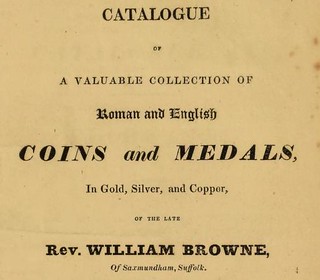 The Sotheby's auction sale catalog series is one of the most extensive in numismatics, with examples dated from 1795 to the present day. In cooperation with the American Numismatic Society, Newman Portal has scanned 1,047 of these catalogs, covering through the year 1923. Newman Portal user Rob Potter (UK) recently wrote us about the Sotheby's June 11, 1827 catalog:
The Sotheby's auction sale catalog series is one of the most extensive in numismatics, with examples dated from 1795 to the present day. In cooperation with the American Numismatic Society, Newman Portal has scanned 1,047 of these catalogs, covering through the year 1923. Newman Portal user Rob Potter (UK) recently wrote us about the Sotheby's June 11, 1827 catalog: It is amazing that you have this and have published it for all to see. I've been researching the life (or rather the death) of Rev. William Brown, whose property this was.
Rev. William Brown (c. 1755-1826) was rector at St. John the Baptist, Saxmundham, Suffolk, from 1798-1826, with his death apparently caused by a horse fall. Oral tradition in the family holds that William's son later fell in love with a servant and was forced to move to America in light of the scandal. Potter also located a separate sale of Rev. Brown's numismatic books, conducted by Mr. Cana
in 1827. This included well-known works such as Folke's Tables of English Gold and Silver Coins (1745) and Evelyn's Discourse of Ancient and Modern Medals (1697).
Image: title page of Sotheby's June 11, 1827 catalog, featuring the numismatic collection of Rev. William Brown
Link to Sotheby's June 11, 1827 catalog of the Rev. William Brown collection:
https://nnp.wustl.edu/library/auctionlots?AucCoId=511728&AuctionId=523416
Link to Cana's catalog of the Rev. Wiliam Brown library:
https://nnp.wustl.edu/library/auctionlots?AucCoId=514539&AuctionId=537897
Link to Rob Potter's biographical note on Rev William Brown:
https://nnp.wustl.edu/library/book/622048
Link to Sotheby's auction sale catalogs on NNP:
https://nnp.wustl.edu/library/auctioncompanydetail/511728
VIDEO: R.S. YEOMAN
The David Lisot Video Library on the Newman Numismatic Portal can be found at:
https://nnp.wustl.edu/library/multimediadetail/522852
We highlight one of his videos each week in The E-Sylum. Here's one from 1986 with the original "Mr. Redbook", Dick Yeo, a.k.a. R.S. Yeoman. -Editor
ANA Numismatic Personality: R.S. Yeoman
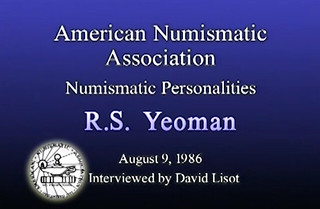 The Redbook started during WWII, but Western Publishing was not permitted to create new products. It was utimately published in 1946.
The Redbook started during WWII, but Western Publishing was not permitted to create new products. It was utimately published in 1946.
Prior to 1940 the only catalogs were published by dealers like B. Max Mehl and Wayte Raymond. It was felt that there was a need for an independent publication. A panel of some 25 dealers was enlisted to provide advice and market valuations. Some of those initial dealers included Aubrey Bebee, Abe Kosoff, and Charles Green.
The hobby in 1986 was already quite different than that of 1946, with more emphasis on silver and gold issues rather than the Lincoln Cents and Buffalo Nickels that people started collecting from circulation. -Editor
To watch the complete video, see:
ANA Numismatic Personality: R.S. Yeoman
(https://nnp.wustl.edu/library/book/557355)
CHANGING TRENDS IN NUMISMATICS
This NGC blog article by Jeff Garrett illuminates the changes in the hobby alluded to in the previous article interviewing R. S. Yeoman in the mid-1980s and discusses trends long before and after that time, up to today's world of the billionaire collector (see the article on Dan O'Dowd's Tyrant Collection elsewhere in this issue). -Editor
In recent years, the demand for rare coins in the top-end of the marketplace has soared. Multi-million-dollar hammer prices have become common place. Last night, an NGC-certified ancient coin sold to an American buyer for $1.9 million dollars. The most recent collecting trend that continues to amaze me has been the emergence of mega-rich collectors battling for the finest and rarest. There are at least four to six billionaires actively collecting coins, each of which has invested at least $200 million in their collection.
The buying activity of these mega-buyers has impacted prices for the finest known and important rarities. How long this trend continues is anyone's guess. These buyers seem to be immune to the economic challenges facing average collectors — higher interest rates, inflation and falling equity markets. The entry of mega-collectors is just the most recent changing trend in numismatics.
Coin collecting habits in the US have evolved since the hobby became popular in the late 1850s. Large Cents became sought after when the large format was discontinued. Many great collections were formed by collectors who started to search for one of every year Large Cent struck from 1793 to 1857. Many were surprised to find out that none had been produced in 1815 due to a copper shortage. Early numismatists were also very interested in Colonial coinage and anything related to George Washington. A study of early rare coin auction catalogues can give today's collectors an interesting glimpse of what was considered important to collect. Perhaps someday in the future collectors will find the habits of present-day collectors to be both interesting and amusing.
Many collectors today are also astounded that collecting coins by different mints did not become popular until the early 20th century. It was not until George Heaton published A Treatise on Coinage of the United States Branch Mints in 1893 that collectors took notice of Branch Mint coinage. This seems almost impossible to modern collectors who would pay $2 million for a 1927-D Double Eagle and only $2,000 for a 1927 Double Eagle. That tiny mintmark is worth a fortune!
Evidence that early collectors did not understand the value of coins from Branch Mints can be seen in the National Numismatic Collection in the Smithsonian. The core collection of the NNC came from the US Mint collection, which was started around 1838 by Chief Coiner, Adam Eckfeldt. The collection is extremely strong in early and later date Proof coinage, but it is lacking in most coins from the Branch Mints. The addition of the Lilly collection in the 1960s filled a tremendous gap in completing the gold coin collection of the NNC.
Other major collecting trends have developed over the years in American numismatics. In the 1960s, when silver was dropped from our circulating coinage, collectors became enamored by rolls of coinage and Proof sets. These were wildly popular in the 1960s, and a review of Coin World or the Numismatist from the time period is filled with ads selling these items. Many collectors of the time started out as speculators in BU rolls and Proof sets. It is interesting to note that during the 1960s the hobby boomed and many publications and organizations had their highest ever circulation and memberships. In the 1960s, ANA membership peaked at nearly 50,000 versus around 25,000 today.
When I first became a professional rare coin dealer in the late 1970s, gold and silver bullion became the driving force in numismatics. By the mid-1980s, common date gold coins dominated much of the action on the bourse floor. In 1984, a common date $5 Indian would sell for over $1,000 (around $2,500 in today's dollars) if it was even close to Mint State. Rare coins were virtually ignored by most collectors at the time. Many of today's numismatic fortunes that have been acquired by professional coin dealers have their roots in selling generic gold coins to collectors and investors.
The development of third-party grading changed the numismatic landscape dramatically in the mid-1980s. Rare coins had a degree of liquidity that had only been dreamed of before. Also, collectors could now have an idea of exactly how rare a coin is by examining the population reports. New investors' money flooded the market and prices spiked going into the 1990s. As with any market that is fueled primarily by investors' money, a bubble formed, and prices dropped drastically. Eventually, the market recovered, and today rare coin prices are primarily driven by collector demand. The advent of the internet has created huge numbers of serious collectors around the globe. The market for rare coins is now more transparent and liquid than ever before.
Because of several important factors, such as third-party grading and the internet, many new collecting trends have developed in the US. Collectors seem more focused than ever before on completing sets of different series. Many take this to extremes by paying "whatever it takes" to acquire coins that will make their sets the best of its kind. Prices realized at auction for coins that were once considered only appropriate to punch into a cardboard holder are truly astounding. Set registry collecting has fundamentally changed the landscape of numismatics.
To read the complete article, see:
Jeff Garrett: Changing Trends in Numismatics
(https://www.ngccoin.com/news/article/11171/)
NOTES FROM E-SYLUM READERS: JANUARY 22, 2023
Answer: Notations on Specimen Notes
Responding to Robert Pepping's questions about notations on Specimen Notes of the Reserve Bank of New Zealand,
Raphael Dvir of Israel writes:
"The annotations are references as appeared in "The Crown Agents Requisition Books - a compilation of currency and postal supply orders. It was a common practice by TDLR in their printer's copy specimen of each and every banknote, currency note and stamps they have printed. In the case of unadopted design, it represents the shipment reference to the designed country for examination by local officials."
Thank you! Raphael has written extensively on the paper money of Palestine and Israel. -Editor
To read the earlier E-Sylum article, see:
NOTES FROM E-SYLUM READERS: JANUARY 15, 2023 : Query: Notations on Specimen Notes
(https://www.coinbooks.org/v26/club_nbs_esylum_v26n03.html#article12)
Medallicartcollector.com
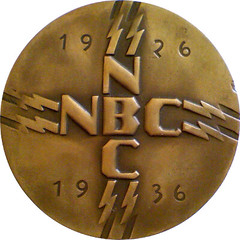 Last week I mistakenly attributed the Medallic Art Collector website to Dick Johnson. Sorry for the oversight. We'll update our archive.
-Editor
Last week I mistakenly attributed the Medallic Art Collector website to Dick Johnson. Sorry for the oversight. We'll update our archive.
-Editor
To read the earlier E-Sylum article, see:
HISTORY OF THE ROBBINS COMPANY
(https://www.coinbooks.org/v26/club_nbs_esylum_v26n03.html#article14)
More on Brothel Tokens
Alan V Weinberg writes:
 "Pictured are 3 brass Paris-struck American
"Pictured are 3 brass Paris-struck American legitimate
brothel tokens from ( clockwise) Chicago (ex Virgil Brand coll), Denver and New York City. They are extremely rare , the Mdm. Olga moderately so. These can literally be squashed flat with moderate thumb pressure as they are hollow, thus shellcards.
"There is one other Paris- struck American brothel shellcard from TheStudio NY shellcard (smaller size) but it is somewhat available so I don't include it in my collection
"There are other American solid struck brass tokens from Western states , particularly Nevada, that are attributed to brothels and a few from Morocco (then a French colony) but that's another subject.
"This response is in connection with the grossly inaccurate attribution of the many French shellcards that are erroneously attributed as brothel tokens."
Thank you. Great pieces. -Editor
To read the earlier E-Sylum article, see:
NOTES FROM E-SYLUM READERS: JANUARY 15, 2023 : More on the French Brothel Token
(https://www.coinbooks.org/v26/club_nbs_esylum_v26n03.html#article12)
Happy Lunar New Year
Jim Contursi writes:
"Another Lunar New Year is upon us, and I want to wish you and all your E-Sylum readers a happy, prosperous and peaceful Year of the Wabbit!
"Thanks for a wonderful publication, and HAPPY NEW YEAR! "
You, too! -Editor
1928 Robbins Company Catalog
 Scott Miller writes:
Scott Miller writes:
"With regard to the Robbins Company, I have a 1928 catalogue from that firm, which features photos and brief write-up of their gold medallion, produced for the Aeronautical Chamber of Commerce of America to present to Charles Lindbergh. The order was placed days before the medals were needed, and the Robbins Company pulled it off. The models were completed by the sculptor, John Gregory, in three days and nights, and the company delivered one gold, 100 silver, and 1500 bronze medals in time for testimonial dinner."
Thanks! Great information. -Editor
To read the earlier E-Sylum articles, see:
THE ROBBINS COMPANY DIES SALVAGED
(https://www.coinbooks.org/v26/club_nbs_esylum_v26n03.html#article13)
HISTORY OF THE ROBBINS COMPANY
(https://www.coinbooks.org/v26/club_nbs_esylum_v26n03.html#article14)
TYRANT COLLECTION MEXICO-BRAZIL EXHIBIT
The Tyrant collection juggernaut continues. This press release describes an exhibit of the collection's Mexican and Brazilian coins at the upcoming Long Beach show. -Editor
Important early coins of Mexico and Brazil from the unparalleled Tyrant Collection (www.TheTyrantCollection.com) will be publicly displayed together for the first time at the Long Beach Coin, Currency Stamp & Sports Collectible Show (www.LongBeachExpo.com), February 2 - 4, 2023.
Entitled Tyrants of the New World,
this will be the latest multi-million-dollar exhibition in a multi-year series of different displays of portions of the extensive and unprecedented Tyrant Collection. Owned by Southern California collector Dan O'Dowd, it is described as the world's most valuable rare coin collection in private hands.
The big exhibit will be divided into two distinct sections: The Tyrants of the Amazon and The Tyrants of Lake Texcoco,
explained Ira Goldberg President of Goldberg Coins and Collectibles, Inc. (www.GoldbergCoins.com) in Los Angeles, California. Goldberg is one of the numismatic professionals providing guidance in assembling the wide-ranging Tyrant Collection of superb quality, historic U.S., world, and ancient coins.
There has never been such an important public exhibit of Latin American coins in Southern California,
he stated.
The Tyrants of New World display showcases how Latin America was divided between the Portuguese tyrants who ruled Brazil and the Spanish tyrants who ruled the rest of Latin America.
The Tyrants of the Amazon is a collection of coins issued by the tyrants who have ruled the Amazon. The objective of this portion of the set is to find the biggest, nicest looking, highest condition portrait gold coin for each tyrant.
The Tyrants of Lake Texcoco collection is a type set of coins from the Mexico City mint. The objective is to find the finest representative of each coin denomination for each tyrant there. If there is more than one major coin design in a reign, then there is a representative of each denomination for each major design.
The coinage from the many Spanish royal mints in Latin America were all very similar,
explained Goldberg. The Mexico City mint was chosen because it is the oldest and most productive Spanish mint in Latin America.
Highlights of the exhibit include:
-
A silver
R
3 Reales of Charles and Johanna dating back to 1536, the first year of the Mexico City Mint, graded NGC VF-25. - Mexico, 1689/8 MO L, silver Royal 8 Reales, Charles II (1665-1700), NGC AU-53.
-
Mexico, 1714 MO J, gold
Royal
8 Escudos, Philip V (1700-1746), PCGS MS-66. -
Mexico, 1711 MXO J, gold
Royal
4 Escudos, Philip V (1700-1746), PCGS MS-65. - Mexico, 1733 MO F, gold 8 Escudos, Philip V (1700-1746), NGC MS-64.
- Mexico, 1822 MO JM, silver 8 Reales, Augustin Iturbide I (1822-1823), NGC PF-63.
- Mexico, 1822 MO JM, Silver 8 Reales, Augustin Iturbide I (1822-1823), NGC MS-62 Star.
- Mexico, 1823 MO JM, gold 8 Escudos, First Republic, NGC AU-55.
- Brazil, 1646, gold 6 Florins (Guilders), Dutch Government of Permambuco (1630-1654), NGC MS-62.
- Brazil, 1703 R (Rio), gold 4000 Reis, Peter II (1683-1706), NGC MS-66.
Visitors to the February 2023 Long Beach Expo exhibit (booth #910) can receive a free, illustrated educational booklet about this latest, amazing display. Detailed catalogs with information and illustrations about each coin in the Tyrants of the New World
exhibit will be available for $10 each.
The Long Beach Coin, Currency, Stamp & Sports Collectible Show will be held in Hall C of the Long Beach, California Convention Center at 100 S. Pine Ave. Public hours are Thursday and Friday, February 2 and 3, from 10 am to 5:30 pm, and Saturday, February 4, from 10 am to 4:30 pm. For additional information about the show, visit www.LongBeachExpo.com.
I haven't met Dan O'Dowd, but would love the opportunity to congratulate him on the collection and thank him for making it available to public displays and publishing books and catalogs to document it. It's an incredible accomplishment. -Editor
For more information on the Tyrant Collection, see:
https://www.thetyrantcollection.com/
NEW INTERNATIONAL MONEY EXPO (IMEX)
Here are two press releases on the planned new International Money Expo. -Editor
Colonel Steven Ellsworth, ret. has announced the 1st Annual International Money Exposition. The convention and show will be held October 26th through 29th, 2023 at the Music City Center, Downtown Nashville, Tennessee. The event will be known as IMEX
.
This will not be just another coin show. It is destined to become a must attend event, held in a world class facility in the heart of one of the country's top destination cities, Nashville, Tennessee,
Music City USA
Ellsworth stated.
Nashville is one of the top cities to visit on people's bucket list, a world class destination and home to the Grand Ole Opry. Nashville's BNA International Airports $1.2 Billion remodeling project is in construction making it one of the best and easiest centrally located airports to fly in and out of in the world.
Ellsworth headed a three year campaign to end sales tax on coins, currency and bullion in Tennessee. One consideration in July 2022, when it was signed into law by Governor Lee, was that Nashville would hold a major international numismatic event in the great city of Nashville. The International Money Exposition does just that. We hope to attract the best dealers and firms in the United States, but also many from Europe and Asia. The Music City Center and the Visitor and Convention Corporation have been very helpful with the convention center and the hotel plans to support it
Ellsworth said and added, We are still in the early planning stages of all the elements needed to put on what we hope to be the number one money convention in the world
.
COL Ellsworth has a long history in business and organizational skills running major events and is uniquely qualified through over 40 years of history in the numismatic field as President of the Butternut Company, past President of the Virginia Numismatic Association and the immediate past president of the American Numismatic Association. He has traveled extensively to conventions in Canada, Mexico, Central America and South America, Europe, Asia and Australia promoting numismatics and is known worldwide.
Colonel Steven Ellsworth, ret. has announced the partnership of Gary Adkins will be joining the International Money Exposition. The convention and show will be held October 26th through 29th, 2023 at the Music City Center, Downtown Nashville, Tennessee. The event will be known as IMEX
.
Gary Adkins is one of the giants in our industry with over 50 years of numismatic and business experience. Gary is widely known throughout the coin industry and brings a wealth of knowledge and experience to our team. He is one of the most influential persons in the business with a stellar reputation having been a Past President of the American Numismatic Association, the Professional Numismatists Guild and the National Coin and Bullion Association. We are excited with his partnership in helping to bring this world class event in a world class facility in the heart of one of the country's top destination cities, Nashville, Tennessee,
Music City USA
Ellsworth stated.
Ellsworth envisioned a world class event several years ago and headed a three year campaign to get a sales tax exemption on coins, currency and bullion in Tennessee. Once the hard part was done, he shared his ideas with Adkins. They began planning of what they envisioned as the vacation with a world coin exposition included
. Anyone coming to Nashville without enjoying the many amenities and attraction is missing a great opportunity
stated Adkins, adding, Nashville is one of the top destinations for fun and entertainment for the whole family. Safety is a top priority for the city, and climate and weather in the spring and fall are generally ideal
.
Nashville has an easily accessible, updated airport---BNA International---which puts it in competition for more visitors from Europe and other global destinations. We hope to attract not only the best dealers from the U.S. but also from around the world
, Adkins stated. This will be our premier to host a major World Exposition, and having several hundred conventions under our belt, Steve and I are up to the challenge. We are both dedicated to making this a major success for all our participants, including dealers, collectors, and all attendees. Coin shows in general are getting rather stale and monotonous, and we hope to reimagine what events in the future might look and feel like.
Adkins noted that with the many details in our planning, glitches would be held to a minimum for this first time as we roll out what we intend to be a must attend event. Our goal is to hold two events per year, one in the spring and one in the fall.
For more information, see:
http://imex.show/
VOCABULARY TERM: MINIATURE
Here's another entry from Dick Johnson's Encyclopedia of Coin and Medal Terminology. -Editor
Miniature. A small medal of reduced size and exact design from a larger size issue. The smaller size medal serves several purposes, it offers a second variety, it facilitates several such miniature medals to be displayed together, and it offers a lighter weight badge for wearing. The dies for striking miniature medals are made from the same PATTERN, MODEL or DIESHELL as the larger medal. There are three kinds of medals where this term is used:
• Miniature decorations are half the diameter of DECORATIONS and CAMPAIGN MEDALS of the United States and other countries. Miniature medals are intended to be worn as are the larger size (called FULL SIZE). Where the large size version is intended to be worn on uniforms, the miniature medals have restricted use—as for formal occasions – and several are usually mounted on a BROACH to display all so authorized
• U.S. Mint Presidential List Medals. The medals of Presidential Medal Series (national medals of the United States Mint) beginning in 1978 were reduced to 1 5/16-inch (33mm) size from the larger 3-inch (75mm) size. The intent of the smaller size, called mini medals, were more for children than for collectors (but this just gave numismatists another variety to collect). The design is identical but relief has been lowered (and with higher rims on both sides) to be diestruck in a coining press, not a medal press. These miniature medals are struck at the Philadelphia Mint (with P or no mintmark), at the Denver Mint (D mintmark) and San Francisco (S mintmark).
• Ladies Badges. Ladies medals are often reduced from a full size fraternal or convention medal made into a badge for wearing. The ladies version is an exact miniature design of the larger version, made from the same pattern, and of lesser weight. An example is the ladies medal of the American Numismatic Association yearly convention medal. Developed by William T. Louth of Medallic Art Company, 1969, the miniature size was not only issued as a badge (with integral loop) for ladies but also in a set of large and small size medals in a set of four, both sizes struck in bronze and silver (without loops).
To read the complete entry on the Newman Numismatic Portal, see:
Miniature
(https://nnp.wustl.edu/library/dictionarydetail/516313)
DAVID W. LANGE – RECOLLECTIONS
Pete Smith submitted this additional article with his recollections of David Lange. Thanks. -Editor
As an active member of Early American Coppers (EAC) during 1983-85, I recall an unusual member, Carol Fiese, who was interested in the cents of 1794. She attracted a lot of attention from the older male members. I recall that I shared a starred reverse cent with her that Ted Naftzger had loaned to me for study. It was not until some time later that I learned she was living with David Lange at the time. Interesting that I met her before I met him. I know that I corresponded with Dave before we met but I don't recall our first meeting.
We had a lot in common. Neither of us were working in the industry then. We were doing research and writing articles for the clubs we enjoyed.
After Dave joined NGC, he frequently staffed their table at major coin shows. These were work trips and he was stuck behind the table and was not able to attend club meetings or educational presentations. I would stop to talk with him frequently when he was not talking with an NGC customer.
Dave decided to take a break from writing a column for The Numismatist about 1992. Barbara
Gregory recruited me to write my Names in Numismatics
column to fill that vacant space. It
was not long before Dave returned with a new column.
We talked about book projects. He wrote the Mint History book as a donation to the ANA and received no payment or royalties. At the time of our discussion I was also negotiating with the ANA on a potential book deal. Dave had experience with book publishers and bad experiences convinced him that self-publishing was the way to go. His advice was helpful as I attempted to find a book publisher.
Dave and I shared some common interests, or perhaps we shared some mutual uncommon interests. In his book on Coin Collecting Boards of the 1930s & 1940s, he identified Robert M. Ritterband as producing coin boards for Lincoln Printing Company in Los Angeles. I sent Dave a number of plastic tokens that Ritterband produced for members of the American Vecturist Association.
I teased Dave when he got the ANA Lifetime Achievement Award. I thought he was too young to stop being productive. Then he was named Numismatist of the Year. It was like adding an oak leaf cluster to a Purple Heart.
When I worked for a coin dealer, one of my jobs was to pop coins out of coin holders. Occasionally I would come across a holder that was interesting for Dave. I recall giving him a Whitman folder with a title on the printed cover that did not match the holes inside. People trusted Dave, both for his opinions and integrity. When the Numismatic Bibliomania Society needed someone to monitor our club elections and announce the results, we turned to Dave. He also compiled results for our writers' competitions.
There came a time when I became frustrated with the leadership of the Numismatic Literary Guild (NLG). This was an opinion shared by others. Dave was recruited to take over the NLG Writer's Competition. He streamlined the categories and reduced the proliferation of Extraordinary Merit Awards. He described them as being thrown out to the members like Mardi Gras Doubloons. We had an extended discussion of the process in general and the Ribbit Award specifically.
Responses to queries in The E-Sylum are infrequent. Dave was someone who would respond and he had favorable comments if he liked an article. Our discussions were often outside of mainstream numismatics. In recent years we had discussion of Texas nickels, coin dealer envelopes, canvas mint bags and Treasure Albums.
Dennis Tucker took a picture of me with Dave at the ANA banquet in 2021. When he received a copy of the picture, he responded to Dennis that he would like to photoshop a smile on Mr. Smith.
When I saw Dave in 2021, I asked if he would be willing to make a Zoom presentation to the
Northwest Coin Club. On April 14, 2022, he gave us A Tour of the Coin Album Museum.
When I introduced him, he had to clarify that he no longer worked for Numismatic Guaranty
Corporation but now worked for Numismatic Guaranty Company®.
Word got out through the Rittenhouse Society that Dave was unable to attend the 2022 convention and the annual Rittenhouse breakfast. Illness forced him to withdraw from active participation. We were saddened by news of his death but not surprised.
I attended Dave's Tour of the Coin Album Museum, and it was a wonderful experience. Dave was an inquisitive, meticulous and generous soul. He sought and found answers to interesting questions, worked diligently to write and publish what he learned, and always shared his thoughts and discoveries with others, Unsurprisingly, the Newman Portal lists over 2,500 hits on his name. His loss leaves a big hole in the hobby.
Here are some videos of Dave recorded by the equally missed David Lisot. -Editor
To watch the videos, see:
Building the Ideal 20th Century Type Set
(https://nnp.wustl.edu/library/book/560378)
Collecting Cherrypicker Varieties
(https://nnp.wustl.edu/library/book/560379)
Coin Collecting Boards of the 1930's and 1940's
(https://nnp.wustl.edu/library/book/560416)
Whitman's Blue Coin Folders as Collectibles
(https://nnp.wustl.edu/library/book/607666)
THE BOOK BAZARRE
Bowers Series.This history-packed reference addresses both the investor and the collector of the popular bullion series. Foreword by Q. David Bowers. 384 pages. Order your copy online at Whitman.com , or call 1-800-546-2995.
REMEMBERING DAVID W. LANGE (1958–2023)
Dennis Tucker of Whitman Publishing published this article on the Mint News Blog. -Editor
David W. Lange, longtime Whitman Publishing author, has left the hobby community after a rich life devoted to numismatics. He died on Monday, January 16, 2023, after cancer slowly took his health and energy over the preceding months.
Dave was the author of nearly a dozen books and hundreds of articles on United States coinage and related subjects. For many years he was an instructor at the American Numismatic Association's Summer Seminar, focusing in particular on collecting type coins. He was a columnist for the ANA's monthly magazine, The Numismatist, since 1988. In 2009 he received the Association's Lifetime Achievement
award, and in 2017 was recognized as Numismatist of the Year.
In 2021 Coin World named him one of the sixty most influential people in numismatics since 1960.
I met Dave Lange shortly after joining Whitman Publishing in 2004. By that time, he'd been Director of Research for Numismatic Guaranty Corporation in Sarasota, Florida, for ten years. In that role, he was responsible for die-variety attribution, counterfeit detection, research, and writing, and for maintaining NGC's coin census report and Certified Collectors Registry. He was a regular on the show circuit—a friendly and enthusiastic researcher and collector.
One of the earliest projects we worked on together was the publication of his History of the United States Mint and Its Coinage (2005), which, in an informal polling of Amazon.com independent booksellers, ranked #182 among the Books Everyone Should Read Before College.
That same year, we published his Guide Book of Modern United States Proof Coin Sets, volume 4 in the Bowers Series.
David W. Lange as a young collector, with his father (standing), and the next-door neighbor who helped him build his Lincoln cent collection. June 1967. (Photograph courtesy of David W. Lange and Whitman Publishing.)
Dave loved to talk about coins, the hobby's history, and a thousand interests. His own collecting had started in the early 1960s, around the age of six or seven. His older brother Doug gifted Dave his Whitman blue folders partially filled with Lincoln cents. Years later, Dave told me that, since that day, he didn't know a time when numismatics didn't have his attention.
His first numismatic purchase was a 1914 Lincoln cent in Good condition, bought at the local F.W. Woolworth's coin-and-stamp counter. Most of his circulated Lincoln cents—the ones he truly cherished—were either ones he pulled from pocket change, gifts from his brother, or coins donated by friends and family. A next-door neighbor, Bob, who worked emptying the parking meters along San Francisco's waterfront, helped fill in many missing slots in his coin folders. Dave sentimentally kept his well-loved and well-circulated coins long after he sold his high-grade Mint State collections.
David Lange (left) and Q. David Bowers at the Professional Numismatists Guild banquet, ANA World's Fair of Money, August 5, 2009. (Photograph courtesy of Q. David Bowers and Whitman Publishing.)
He remembered the first U.S. Mint Proof set he bought, a brilliantly shiny new set of five San Francisco coins that cost $5 in 1971—and I've been on the United States Mint's mailing list ever since.
Over the years, his interest in the hobby grew, and he was recognized as an expert in die varieties, U.S./Philippine coinage, Lincoln cents, Buffalo nickels, Mercury dimes, modern Proof sets, and other series. The books he wrote are regarded as standard references.
Dave Lange surrounded by Whitman coin folders and albums—among his many hobby-related passions. His sense of humor shines in this portrait from his last book, Coin Collecting Albums—A Complete History & Catalog, volume three, Whitman Publishing Company: Folders and Albums 1940–1978. (Photograph courtesy of PennyBoard Press and Whitman Publishing.)
He was a constant advisor to Whitman Publishing. In the past year or two, we consulted him on the Red Book, Mega Red, 100 Greatest Canadian Coins and Tokens, A Penny Saved, the Cherrypickers' Guide, and numerous other projects.
Beyond his numismatic knowledge and expertise, Dave Lange will be remembered for his warmth and good cheer. Ancient-coin specialist David Vagi, a colleague at NGC, told me, He was a real gem, one of my favorite people in the world. More than anything, I'll miss his generosity and his astonishing sense of humor.
Dave Lange and Ken Bressett at the debut of the latter's A Penny Saved: R.S. Yeoman and His Remarkable Red Book, ANA World's Fair of Money, August 11, 2021. (Photograph by Dennis Tucker, courtesy of Whitman Publishing.)
At a Rittenhouse Society breakfast a couple of years ago, I asked Dave why he was clean-shaven after wearing a beard for many years. He made everyone laugh as he talked about soaking his graying beard with hair dye and then taking a nap. He overslept, and when he woke up, his normally reddish-brown beard was nearly jet-black! That was the end of it.
I recently asked him his opinion on changing the Red Book's Barber coin nomenclature from, for example, Barber or Liberty Head Dimes
to simply Barber Dimes
(since nobody today calls them Liberty Head
coins). He replied, I think you should revert to calling them Morgan dimes, quarters, and halves, just to mess with readers. After all, that's how they're identified on early Whitman folders!
Those old coin folders were dear to his heart. Through his PennyBoard Press imprint, which he founded in 2007, Dave shared a passion for collecting, researching, and educating people about coin boards, folders, and albums and the history of their production in the United States. I believe he knew more about Whitman Publishing's early coin boards and folders than anyone else alive, other than Kenneth Bressett.
David W. Lange at the Rittenhouse Society's annual breakfast, August 14, 2021. He was elected to the Society in 2005. (Photograph courtesy of Dennis Tucker.)
Whitman Publishing President Mary Burleson says, David was always such a bright light in the numismatic community. He was always willing to assist with any request. When I talked to him in December, he was so determined to fight through the treatments and to return to the Baltimore conventions.
Whitman Senior Editor Diana Plattner laments his passing as a terrible loss for the hobby.
Bill Fivaz, coauthor of the Cherrypickers' Guide to Rare Die Varieties, a book that Lange contributed much knowledge to, says, He was certainly one of the good guys, and will be missed by the entire collecting community as well as many others.
Ken Bressett, Editor Emeritus of the Red Book, says, I am deeply saddened by the news of David's passing. He will be missed by everyone because he was a friend to all. He was a very special comrade.
To read the complete article, see:
Remembering David W. Lange (1958–2023)
(https://world.mintnewsblog.com/2023/01/remembering-david-w-lange-1958-2023/)
NUMISMAGRAM MEDAL SELECTIONS: JANUARY 2023
Numismagram's Jeremy Bostwick sent along these four medals from his recent addition of new items to his website. For all of the new items, please visit https://www.numismagram.com/inventory. -Editor
101790 | GREAT BRITAIN. London. Gambrinus Restaurant bronze Token Issued circa 1890 for Charles Manzel's "Lager Beer Hall" in Piccadilly Circus (30mm, 10.56 g, 12h). By Vaughton's in Birmingham. THE "LAGER BEER KING", man in frock coat, riding goat left and removing top hat; in two lines below in script: "Faithfully Yours / Chs. Manzel" / Ye Olde / "GAMBRINUS" / Lager-Beer Hall / 3 GLASSHOUSE ST / LONDON / W in six lines; all within wreath of barley grains and hop cones. Edge: Plain. About Uncirculated Details. Dark brown surfaces, with a few lightly scattered scuffs and marks. A fairly scarce and interesting piece of breweriana. $95.
As the turn of the century approached near the end of the Victorian era, the timelier shipping of food and drink allowed for an increase in the presence of imported goods for the English consumer. While beer—in the form of ale—was no stranger at any public house, its crisper cousin—in the form of lager—was not nearly as present, given that the latter was far more frequently (and rather expertly) brewed in Germany, Austria, and Bohemia. Its highly regarded and refined status was a treat for the English pub drinker, so much so that pubs and restaurants specializing in the import and tapping of lager barrels began to pop up. This advertising token points to the popularity of the time, as the name of Gambrinus
refers to the legendary king of Flanders known for his mythical brewing abilities. Meanwhile, the goat on the obverse emanates from a type of beer brewed in Einbeck in Northern Germany, with the name of the city being pronounced as "Einbock" in Bavaria, einbock meaning "billy goat" in the native parlance. The establishment itself, along with this growing fondness for the "German beer," is evident in the 1898 publication London and its Environs: Handbook for Travellers,, on page 14, in which it writes:
"The traveller's [sic] thirst can at all times be conveniently quenched at a Public House,, where a glass of bitter beer, ale, stout, or ‘half-and-half' (i. e. ale or beer, and stout or porter, mixed) is to be had for 1-1/2-2d [pence]. (6d. or 8d. per quart). Good German Lager Bier (3-6d. per glass) is now very generally obtainable at the larger restaurants, in some of which it has almost entirely supplanted the heavier English ales. Wine (not recommended) may also be obtained. Genuine Munich Beer, (‘Pschorr') and Bohemian Beer, (‘Bürgerliches Bräuhaus, Pilsen') from the cask may be obtained at the Gambrinus Restaurants, 3 Glasshouse Street, Piccadilly Circus, and 3 Lawrence Lane, Cheapside; also German sausages, smoked eel, and similar ‘whets'. English-made lager-beer is supplied in an establishment in the basement of the Café Monico, Piccadilly Circus, fitted up in the ‘old German' style."
To read the complete lot description, see:
101790 | GREAT BRITAIN. London. Gambrinus Restaurant bronze Token.
(https://www.numismagram.com/product-page/101790)
102229 | SWEDEN. Skåne Fire Insurance Institute silver Medal. Issued 1928. Commemorating the 100th anniversary of the establishment (50mm, 51.75 g, 12h). By E. Lindberg in Stockholm. Male standing facing, head lowered left and nude except for billowing cape, thrusting sword into the mouth of a fire breathing dragon to lower left / SKÅNSKA / BRAND– / FÖRSÄKRINGS– / INRÄTTNINGEN in four lines; below, crowned civic coat-of-arms of Skåne between 1828 / D•24 – 1928 / APR•. Edge: SILVER 1928. Ehrensvärd 284. Mintage: 3 (in gold) & 250 (in silver). Gem Mint State. Slate gray surfaces, with some deeper toning nearer the peripheries and a great matte nature overall. $235.
To read the complete lot description, see:
102229 | SWEDEN. Skåne Fire Insurance Institute silver Medal.
(https://www.numismagram.com/product-page/102229)
102234 | FRANCE & SWITZERLAND. François I/Battle of Marignano silver Medal. Issued circa 1845-1860. Commemorating the victory over the Swiss (56mm, 74.27 g, 12h). After P. Regnier at the Paris mint. FRANCISCVS • I • FRANCORVM • REX, laureate, draped, and armored bust left / VICI • AB • VNO • CÆSARE • VICTOS • (I defeated the Helvetii, which only Julius Caesar had defeated before me) / MARIGNAN, trophy of arms, with spears and palm fronds. Edge: «hand» ARGENT. Cf. MdP 102/3; cf. SM 115 (bronze). Choice Mint State. Extremely lustrous and vibrant in the fields, with some hints of cobalt and burnished amber sprinkled throughout; a typical die flaw is noted on the obverse, and some very minor metal roughness in the last two letters of the reverse legend is noted for completeness. $465.
The last major conflict in the War of the League of Cambrai, the Battle of Marignano (now known as Melegnano) pitted François, the newly crowned king of France, against mercenaries of the Old Swiss Confederacy. The war was itself a part of a series of skirmishes known as the Italian wars—territorial issues that saw various factions both against and with others at differing times, including the Holy Roman Empire, the Papal States, the Republic of Venice, the Duchy of Milan, and Spain. Following the success of François and his French forces at Marignano, the Swiss cantons signed a treaty of perpetual peace
and France began its occupation of Milan. The two-day battle took place just one day after the 21st birthday of François.
To read the complete lot description, see:
102234 | FRANCE & SWITZERLAND. François I/Battle of Marignano silver Medal.
(https://www.numismagram.com/product-page/102234)
102343 | UNITED STATES. Catskill Aqueduct Completion bronze Medal/"so-called Dollar". Issued 1917 (38mm, 26.05 g, 12h). By D. C. French & A. Lukeman, and struck by the Medallic Art Co. in New York. Female head right, wearing laurel wreath and head scarf / Nude male standing left, pouring forth water from a large urn; in four lines across field, TO COMMEMORATE THE COMPLETION / OF THE CATSKILL AQUEDUCT / AN ACHIEVEMENT OF CIVIC SPIRIT / SCIENTIFIC GENIUS AND FAITHFUL LABOR / 1905 NEW YORK 1917. Edge: MEDALLIC ART CO NYC. HK 667; Marqusee 177; Baxter 245. Choice Extremely Fine. Light olive-brown surfaces. $345.
Started in 1905, the Catskill Aqueduct—intended to transport water from the Catskill Mountains some 163 miles south to New York City—was completed 12 years later—an event that was to be commemorated on a medal authorized by the subcommittee of the Mayor's Catskill Aqueduct Celebration Committee. Daniel Chester French, who served on the board of trustees of the Metropolitan Museum of Art with Robert de Forest (himself the president of the aforementioned committee), was selected to design the commemorative medal. The subsequent work of art, issued by the American Numismatic Society (ANS), measured 76mm in diameter and was cast in both bronze and silver, with respective mintages of 57 and 12 in these formats. The Medallic Art Company (MACO), entirely independent of the ANS, struck an unknown number of medals with this design in bronze and at a diameter of 38mm. Sixteen years later, then president of MACO Clyde Curlee Trees chose French's obverse design—depicting a female representative of either Greater New York or Columbia—as the symbol and logo of MACO, with it becoming synonymous with the company going forward. Interestingly enough, the ANS is now the owner of the archival remains and intellectual property rights of MACO, the former having purchased the latter out of bankruptcy in 2018.
To read the complete lot description, see:
102343 | UNITED STATES. Catskill Aqueduct Completion bronze "So-Called Dollar"
(https://www.numismagram.com/product-page/102343)
NUMISMATIC AUCTIONS SALE 67 U.S. HIGHLIGHTS
Here are some more highlights from Auction 67 from Numismatic Auctions LLC., including a 1795 Flowing Hair dollar, 1799 gold eagle, and Agricultural Society Medals by Charles Cushing Wright. Session I closes January 28, 2023, and the online Session II closing is February 18. -Editor
Lot 103: 1809 O-106 Half Dollar
1809. O-106 Prime die state with no die cracks. PCGS XF45, looks fully AU with attractive pastel rose gold and violet-gray toning, substantial luster remains. A lovely R3+ to R4 EDS specimen. Ex: Jim Ross.
To read the complete lot description, see:
US 1809 O-106 Half Dollar PCGS XF45 Prime die state/no cracks! PQ
(https://numismaticauctions.nextlot.com/auctions/1417146/lots/11325637)
Lot 193: 1861-S Half Dollar
1861-S. Beautiful rose-gold toned lustrous Choice Unc. A fabulous Civil War example Seated Half Dollar from the San Francisco Mint.
To read the complete lot description, see:
US 1861-S Half Dollar Choice Unc
(https://numismaticauctions.nextlot.com/auctions/1417146/lots/11326267)
Lot 196: 1880 Proof Half Dollar
1880. Desirable deep blue & violet toned PCGS PR65 and a true hammered colorful Gem example.
To read the complete lot description, see:
US 1880 Half Dollar PCGS PR65 Superbly Toned Proof in blue & violet hues
(https://numismaticauctions.nextlot.com/auctions/1417146/lots/11326288)
Lot 202: 1795 Flowing Hair Dollar
1795 Flowing Hair, 2 Leaves. Satiny lustrous gunmetal blue, teal and golden toned Unc or virtually so, a trifle softly struck at centers as typical for the issue yet on a broad flan with strong presentation, some light old marks and faint scattered hairlines nearly concealed by the toning and not detracting to the naked eye. A beautiful type coin and scarcer variety with great eye appeal.
To read the complete lot description, see:
US 1795 Flowing Hair, 2 Leaves Early Silver Dollar Virtually Unc
(https://numismaticauctions.nextlot.com/auctions/1417146/lots/11326330)
Lot 308: 1910-D Gold Half Eagle
5 Dollars, 1910-D. Lustrous Unc and appealing, cpl small marks from a higher grade.
To read the complete lot description, see:
US 1910-D Gold 5 Dollar Lustrous Unc
(https://numismaticauctions.nextlot.com/auctions/1417146/lots/11327072)
Lot 310: 1799 Gold Eagle
10 Dollars, 1799. Choice to Gem Unc appearance, lustrous and well struck, some hints of expert conservancy, the most notable being some edge anomalies - yet with stunning visual impression and color! Rare in this quality.
To read the complete lot description, see:
US 1799 Gold 10 Dollar Choice to Gem Unc Rare
(https://numismaticauctions.nextlot.com/auctions/1417146/lots/11327086)
Lot 413: ABNC Reissue Rawdon, Wright, Hatch & Edson Engraving Sampler
Obsolete Currency. Large ABNC Reissue Rawdon, Wright, Hatch & Edson Engraving Sampler of 19th Century Vignettes & Banknote Design Elements. 22 x 28 on card stock, an ABNC reissue print from the original plate in intricate detail. A 1979 edition of only 998 pcs originally sold for $65 plus shipping. Nearly as made, cpl lt edge bumps but bright and crisp. Wonderful for framing or display for the Broken Banknote enthusiast.
To read the complete lot description, see:
US Obsolete Currency Sampler Vignette Uncut Sheet ABNC Reissue
(https://numismaticauctions.nextlot.com/auctions/1417146/lots/11327807)
Lot 417: Agricultural Society Medals by Charles Cushing Wright
Michigan State Agricultural Society Silver Medal Trio. All AR, 58mm by Charles Cushing Wright. As Julian AM-45, Harkness MI-30. All awarded for various furniture and equipment from 1872, 1875 and 1878. Avg aEF to EF, one hairlined and bright, the others toned. Nice lot. 3 medals.
To read the complete lot description, see:
(https://numismaticauctions.nextlot.com/auctions/1417146/lots/11327835)
To read the earlier E-Sylum article, see:
NUMISMATIC AUCTIONS SALE 67 U.S. HIGHLIGHTS
(https://www.coinbooks.org/v25/esylum_v25n52a17.html)
NUMISMATIC AUCTIONS SALE 67 HIGHLIGHTS
(https://www.coinbooks.org/v26/club_nbs_esylum_v26n03.html#article19)
NUMISMATIC NUGGETS: JANUARY 22, 2023
Here's a selection of interesting or unusual items I came across in the marketplace this week. Tell us what you think of some of these. -Editor
AV Aureus, 6.67g (21.5mm, 6h). IMP ALEXAN DER PIVS AVG, laureate, draped, and cuirassed bust right / IOVI PRO PVGNATORI, Jupiter, naked except for cloak over shoulder, standing facing, head right, holding up thunderbolt in right hand.
Pedigree: Ex Ars Classica XIII (27 June 1928), lot 1431.
References: RIC IV 234; Calicó 3060; BMCRE 789.
Grade: Some light scratches in the fields. Large flan with good strike and some luster. Good VF (re1132)
A great ancient from the stock of Shanna Schmidt. -Editor
To read the complete lot description, see:
Severus Alexander. 222-235 AD. Rome, c. 231 AD
(https://www.shannaschmidt.com/roman-empire/severus-alexander-222-235-ad-rome-c-231-ad)
1797 British Cartwheel Penny
Countermarked "(Cat or Calf Walking Left) // C T"
The animal could be a cat, a calf, or another animal.
Issuer:
Business/Profession:
Date of issue: 1797 or later
Place of issue: Great Britain or British Colonies
Unusual pictorial counterstamp, from the eBay offerings of Bob Merchant. -Editor
To read the complete lot description, see:
1797 British Cartwheel Penny, Counterstamp "(Cat or Calf) / C T"
(https://www.ebay.com/itm/134413295820)
1860's Henry Clay Political Campaign Token, Dewitt HC-C Nice Uncirculated. Henry Clay. A Tariff For Protection. Rare (150-200).
Odd-looking elongated portrait. Interesting and rare item from Steve Hayden's eBay sales. -Editor
To read the complete lot description, see:
1860's Henry Clay Political Campaign Token A Tariff For Protection Rare
(https://www.ebay.com/itm/204214654263)
Lincoln Cent 1909 VDB PCGS MS66RD $465
Gem uncirculated. Housed in an old PCGS green label holder. PCGS Price Guide is $500.
Certification Number: 1540729
A great early Lincoln Cent from Northeast Numismatics. -Editor
To read the complete lot description, see:
Lincoln Cent 1909 VDB PCGS MS66RD
(https://www.northeastcoin.com/popupcontainer.jsp?include=vi&itemKey=zi04_1000278217)
1861 $1 Bank Note (Petersburg, VA) Grades vf details.
Great U.S. Civil War issue from a town at the center of the action. -Editor
To read the complete lot description, see:
1861 $1 Bank Note (Petersburg, VA) Grades vf details.
(https://www.liveauctioneers.com/item/145126082_1861-1-bank-note-petersburg-va-grades-vf-details)
Fr. 1179 $20 1905
Grade: PMG Ch. AU 58
Extraordinary beauty and color envelopes this rainbow $20. It was Teddy Roosevelt's desire to make paper and color this beautiful. He succeeded.
A great note from the 2023 Winter Lyn Knight Sale of Type Notes and National Bank Notes. -Editor
To read the complete lot description, see:
Fr. 1179 $20 1905
(http://www.lynknight.com/items/1187598)
WAYNE'S NUMISMATIC DIARY: JANUARY 22, 2023
 Tuesday, January 17 brought the first meeting of 2023 of my Northern Virginia Numismatic Social group Nummis Nova. I was the host and picked Ristorante Bonaroti in Vienna. I was assisted by Jon Radel who kindly offered to handle the restaurant reservation and announcements.
Tuesday, January 17 brought the first meeting of 2023 of my Northern Virginia Numismatic Social group Nummis Nova. I was the host and picked Ristorante Bonaroti in Vienna. I was assisted by Jon Radel who kindly offered to handle the restaurant reservation and announcements.
I arrived around 6pm and found Julian Leidman waiting in the parking spot next to mine. We were seated at a table a little small for our expected number and before ordering they thankfully relocated us. A recession may or may not be on the horizon, but business was booming at this classic Italian restaurant, with nearly every seat filled by the end of the evening and more people at the bar and outside on the porch.
Jonas Denenberg was the next to arrive, quickly followed by Tom Kays, Robert Hoppensteadt, Mike Packard, Jon, Steve Bishop and Wayne Herndon.
J.S.G. Boggs NFT
 I've long been a collector of the work of "Money Artist" J.S.G. Boggs, and added to my collection when his estate recently offered a series of NFTs honoring his legacy. In keeping with the performative aspect of Boggs' work, buyers of the NFTs were given a printed receipt, in this case a "crypto receipt." The Estate also provided buyers with a Limited Edition Boggs Note to accompany the digital one. The Limited Edition note includes all of Boggs' typical anti-counterfeiting measures on the otherwise blank back, including the edition number, indenture printing and rubberstamps, and even a facsimile of the late artist's thumbprint. In another thoughtful touch, the accompanying letter is on paper made from recycled U.S. currency. Kudos to Archivist & Historian Craig Whitford for another high-quality production in the tradition of our late mutual friend.
I've long been a collector of the work of "Money Artist" J.S.G. Boggs, and added to my collection when his estate recently offered a series of NFTs honoring his legacy. In keeping with the performative aspect of Boggs' work, buyers of the NFTs were given a printed receipt, in this case a "crypto receipt." The Estate also provided buyers with a Limited Edition Boggs Note to accompany the digital one. The Limited Edition note includes all of Boggs' typical anti-counterfeiting measures on the otherwise blank back, including the edition number, indenture printing and rubberstamps, and even a facsimile of the late artist's thumbprint. In another thoughtful touch, the accompanying letter is on paper made from recycled U.S. currency. Kudos to Archivist & Historian Craig Whitford for another high-quality production in the tradition of our late mutual friend.
To read the earlier E-Sylum articles, see:
J.S.G. BOGGS ESTATE TO ISSUE NFTS
(https://www.coinbooks.org/v25/esylum_v25n03a19.html)
BOGGS ESTATE SELLS NFTS, RECEIPT AND CHANGE
(https://www.coinbooks.org/v25/esylum_v25n42a17.html)
New Books
As usual I brought along some numismatic literature, this time two books recently announced in The E-Sylum. I didn't photograph them at the meeting, but here are cover images from the earlier articles.
To read the earlier E-Sylum articles, see:
NEW BOOK: HERMON ATKINS MACNEIL
(https://www.coinbooks.org/v25/esylum_v25n43a02.html)
NEW BOOK: BEAUTIFUL BANKNOTES OF FRANCE
(https://www.coinbooks.org/v26/club_nbs_esylum_v26n03.html#article3)
Conversation within my declining earshot included upcoming coin shows, Jonas' recent purchases and eBay sales, and Wayne Herndon's post- FUN purchase of two and a half tons of U.S. Proof sets for stock.
Tom's Notes and Photos
Here's are Tom's notes and photo of yours truly.
Tom Kays writes:
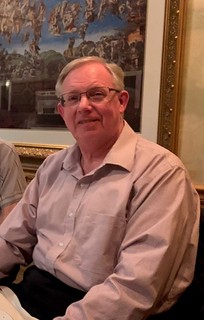 "I brought a small display case of modern coins that garnered little interest in the low light of a fine Italian restaurant, especially to the older eyes of most of the Nummis Nova diners. The case held modern cents, nickels, and dimes having sundry mint errors. Now to tell the truth, I gave up collecting Lincoln Cents and common twentieth century US coins nearly fifty years ago. I parked rolls of Wheaties pulled from change into jars for future perusal by youngsters with clear, sharp eyesight, who care about holes in their blue cent folders and know the breadth and depth of low mintage key dates, mint errors, and the difference between
"I brought a small display case of modern coins that garnered little interest in the low light of a fine Italian restaurant, especially to the older eyes of most of the Nummis Nova diners. The case held modern cents, nickels, and dimes having sundry mint errors. Now to tell the truth, I gave up collecting Lincoln Cents and common twentieth century US coins nearly fifty years ago. I parked rolls of Wheaties pulled from change into jars for future perusal by youngsters with clear, sharp eyesight, who care about holes in their blue cent folders and know the breadth and depth of low mintage key dates, mint errors, and the difference between savers
and spenders.
"As luck would have it I sat next to Jonas who can still see these coins and discern minute differences, and who knows how to move inventory via social media to the newest generation of coin collectors, who think sixty-five year old wheat cents are practically ancient, and well worthy of acquisition. Highlights of these lowlights included a 1964 Class I, double-struck/rotated obverse die cent, a pair of Class II (Poor Man's) 1955 double-die obverse cents, and more modest accidents involving grease-filled dies, lamination errors, and die cracks as culled from circulation for face value fifty years ago."
Modern Errors included a 1964 double struck, rotated obverse cent and Poor Man's 1955 Double-Die Obverse Cents
Tom continues:
"I also brought The Cherry Picker's Guide to Rare Die Varieties (4th Edition, Volume 1) by Bill Fivaz et. al., published in 2001, hoping to identify some plums among the pits. When all Lincoln cents have fuzzy looking dates, it is time to pass the torch.
"The highlight of the evening came from Steve Bishop who enticed us to play guess the grade
on a stack of raw, Mint State Morgan Dollars. "
Steve's Beauties
Steve Bishop likes toned coins, and he shared these recent online purchases of unslabbed coins. The seller photos aren't great - the coins looked nice in person and generated good discussion on grading, pricing, and striking characteristics. Thanks.
Yet another great night of numismatic fellowship, despite the lower-than-usual turnout. I'm looking forward to next month.
COINS OF THE KINGS OF BITHYNIA
History has so much to teach us about history and geography. The latest Mike Markowitz CoinWeek Ancient Coin Series article discusses the Kings of Bithynia. Here's an excerpt - see the complete article online for more. -Editor
ALONGSIDE THE GREAT Seleucid and Ptolemaic empires that emerged from the breakup of Alexander the Great's empire following his death in 323 BCE, several small Greek-speaking kingdoms sprang up. Some of these produced exceptionally artistic portrait coins, and for almost two centuries, Bithynia's issues ranked among the finest.
Bithynia is a fertile, hilly region in the northwestern corner of Anatolia. In 297 BCE, Zipoetes, a tribal chieftain, declared himself king. Many years later, this date became Year 1 of the Bosporan Era
, used to date coins and inscriptions. Zipoetes ruled for an incredible 48 years, waging successful wars against neighboring kingdoms and expanding his territory. He was succeeded by his son Nikomedes, the first Bithynian ruler to issue coins in his own name.
Nikomedes I
Nikomedes came to the throne in 278 BCE when he was about 22 years old. He executed two of his brothers, but a third, Zipoetes II, escaped and raised a revolt. To crush this rebellion, Nikomedes hired Gauls, ferocious Celtic warriors that had migrated into the neighboring region of Thrace. These Gauls later settled in a part of Anatolia that became known by their name: Galatia.
In 264 BCE, Nikomedes founded his new capital city, modestly naming it Nikomedia (or Nicomedeia; today Iznik, Turkey). Centuries later, under Emperor Diocletian (ruled 284 – 305 CE,) Nikomedia became the eastern capital of the Roman Empire.
Prusias I
Prusias (or Prousias), son of Ziailas, was about 17 years old when he became king in 230 BCE. During his long reign of 48 years, Bithynia reached the height of its power. He earned his nickname Cholus (the lame
) when he was struck by a stone, breaking his leg, while climbing a ladder in the siege of Heraclea Pontica on the Black Sea coast. When he obtained the ruined city of Cius (or Keios) from Philip V of Macedon, he renamed it Prusias (today Bursa, Turkey) for himself. He married Apama III, Philip V's sister.
High-grade silver tetradrachms of Prusias I currently sell in major auctions for $2,000 to $5,000 and up. His bearded, diademed portrait appears on the obverse. On the reverse, an elegant standing figure of the god Zeus extends his right arm to hold a wreath above the king's name. This may represent a famous statue, Zeus Stratios, that stood in a temple in Nikomedia. Some cataloguers describe the figure as Zeus Stephanophoros (Zeus the Wreath-Bearer
). A small thunderbolt symbol and two monograms (thought to be the names of mint officials) appear below the god's extended arm. The portrait coins of Prusias are among the finest of the Hellenistic series,
wrote a cataloguer, depicting him with a luxuriant set of chin whiskers and a self-satisfied smirk.
To read the complete article, see:
CoinWeek Ancient Coin Series: Kings of Bithynia
(https://coinweek.com/ancient-coins/coinweek-ancient-coin-series-kings-of-bithynia/)
ANOTHER SPONSIAN ARTICLE
Pablo Hoffman of New York City passed along this Atlas Obscura article on the Sponsian coin issue. It's based on the Hunterian Museum's research, and has some images we haven't published before. There's a funny typo in one of the captions: " images of the Hungarian Museum's Sponsian coin..." -Editor
In 1713, eight gold coins of five different designs were dug up in Transylvania, in modern-day Romania, and acquired by a man named Carl Gustav Heraeus. One of them featured a face and the name Sponsian.
Roman coins bore the faces of the ruler who issued them, even if his reign had been brief. The eight coins were discovered to have come from a larger hoard of gold coins that had been spread around at the time. Four Sponsian coins from that hoard are known to exist today. However, Sponsian's name doesn't appear in any ancient texts or sources. Over the years, the coins were written off as fakes—and the emperor was, too.
Pearson decided to look into the story behind this obscure possible emperor as an entertaining digression from the grim book he was writing. I thought it was an interesting story to research,
he says, partly because it seemed like there was a slightly puzzling issue explaining how that came to be.
While doing his early research, Pearson realized that there were no clear photographs of the slightly infamous coins anywhere. There were some grainy black-and-white published photographs, but nobody had ever had a close look at these coins.
He learned that the Hunterian Museum in Glasgow had one of the Sponsian coins and three others of similar design, depicting Gordian III and Philip (I or II), both of whom were real emperors with brief reigns during the tumultuous third century. So Pearson emailed Jesper Ericsson, the museum's curator of numismatics, to request a photograph of the Sponsian coin. We were both quite puzzled by the appearance of it,
he says, which had indications of being deeply worn and having incrustations on the surface.
Why would a forgery appear to have spent a long time in the ground? Unsure of what it all meant, Pearson and Ericsson assembled a team for a study to get to the bottom of the mystery.
The study, recently published in the journal PLoS, examined the four coins in the Glasgow collection, in addition to two other Roman gold coins of Gordian III and Philip I that are thought to be authentic. The study concluded that the four coins, as appearances suggested, had been buried in soil for a substantial period of time, and were already deeply worn before their interment. This suggests that they had actually been in circulation in antiquity. It seemed possible from the first scientific analysis of a Sponsian coin that he could represent a real, lost Roman emperor.
The third century was a bad time for the vast empire, and it was a period that saw rapid, constant changes in political leadership. Between A.D. 235 and A.D. 284, there were at least 26 claimants to the title of emperor, mostly generals. When the Sponsian coins were first discovered, scholars thought they had identified a new emperor or usurper who had claimed the title in A.D. 249. But then 19th-century French numismatist Henri Cohen dismissed them as very poor quality modern forgeries.
It didn't help that no one had ever heard of Sponsian before. The case seemed to have been closed.
Pearson's study, however, appears to have opened the discussion once again. There's been a lot of comments since we published the paper,
Pearson says. Responses have been posted online, he says, but nobody has contacted me as the corresponding author with any serious critiques of the paper.
Pearson and his team hypothesize that the coins aren't fake, and that they do indeed point to the existence of an otherwise unknown emperor.
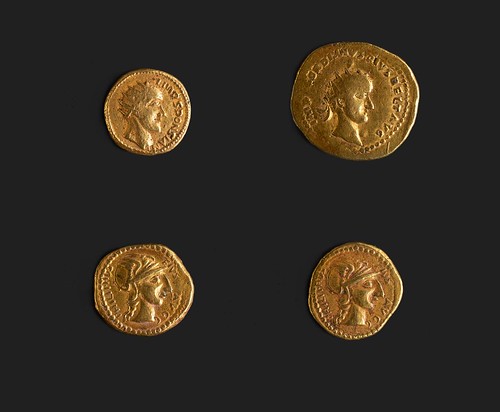
Four coins in the Glasgow collection were examined (clockwise from top left): Sponsian, Gordian III, and two of Philip (I or II)
To read the complete article, see:
Can an Old Coin Solve the Mystery of a Lost Roman Emperor?
(https://www.atlasobscura.com/articles/emperor-sponsian-coins)
COUNTERFEIT BUST DIME DIE MARRIAGES
In today's JR Newsletter from the John Reich Collectors Society, author Winston Zack announced an interesting collecting milestone. -Editor
I am over the moon to share with the JRCS community that as of January 20th, 2023, I finally completed my Capped Bust ‘dime' die marriage collection. Why is ‘dime' in quotes? Because these are not your normal John Reich (JR) dime die marriages. Rather these are Zack (Z) hand-made, die struck circulating contemporary counterfeit Bust dime die marriages. And to my knowledge I'm the first person to have ever completed such a collection.
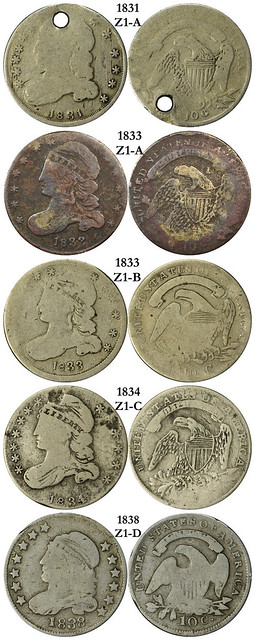 There are only five (5) documented counterfeit Bust dime die marriages of this type. While this is not a lot of varieties, I can assure you that this task is exceptionally challenging as only 19 total examples have been photographically documented in my census.
There are only five (5) documented counterfeit Bust dime die marriages of this type. While this is not a lot of varieties, I can assure you that this task is exceptionally challenging as only 19 total examples have been photographically documented in my census.
My first attempt at acquiring an example, an 1833 Z1-A, came in November 2012 but I was outbid and thus did not win it. Nevertheless, as a Bust dime and contemporary counterfeit collector I persevered. My first piece was 1834 Z1-C, a gift from the late Kirk Gorman. This was followed by a rather cruddy and since upgraded fantasy-dated 1838 Z1-D. I then acquired a collection which had 2 other varieties, 1831 Z1-A and 1833 Z1-B (still unique). Finally, earlier this year I was able to acquire the fifth and final variety, an 1833 Z1-A which, and rather amusingly, was the first variety I tried to buy; only 3 examples of this variety have been documented and one of those (the finest) is in the ANS collection. A collage of my collection is included here.
If you have a die struck circulating contemporary counterfeit Bust dime example that I have not documented, or frankly any other die struck circulating contemporary counterfeit U.S. coin, I'd like to hear from you so that I may add your pieces to my growing photographic census and associated documentation for my BAD METAL publications.
For more information about the John Reich Collectors Society, see:
https://www.jrcs.org/
To read the earlier E-Sylum article, see:
NEW BOOK: BAD METAL: SILVER 3 TO 25 CENTS
(https://www.coinbooks.org/v25/esylum_v25n32a06.html)
THE 1878 DRITANNIAR SIXPENCE
An interesting modern error coin was recently found by a detectorist. I was unaware of the "Dritanniar sixpence." -Editor
A Victorian silver coin uncovered by a detectorist turned out to be something of "a rarity" when the eagle-eyed finder spotted a spelling error on it.
The sixpence, dated 1878 and found in a Cambridgeshire field, bore the word "Dritanniar" instead of "Britanniar".
The erroneous "D" would have been an "embarrassment" for the engraver who stamped the coins, experts said.
The batch was sent to Cyprus and apparently returned later to be melted down, but some of the coins survived.
David Stuckey found the Victorian sixpence earlier this month and posted photographs of it on his Facebook page.
"It turns out the Victorian silver sixpence... is an extremely rare one," he said.
It came to the attention of numismatist and coin dealer Martin Platt, from Truro, Cornwall, who knew of the history of the coins from a book called A New History of the Royal Mint - a 1992 work collated by specialist Christopher Challis.
The coins, minted in 1878, were sent to Cyprus to settle arrears in salaries left behind by the departing Ottomans and to pay Indian troops who had been transferred from Africa to serve in Cyprus during the early stages of administration, Mr Platt said.
Britain had occupied Cyprus in 1878, although it remained nominally under Ottoman sovereignty. The island was annexed by Britain in 1914, after more than 300 years of Ottoman rule.
In the book, Challis wrote: "The discovery caused embarrassment and complaint, and blame fell on the resident engraver Thomas Minton, who had conveniently died before the error came to light."
When Cyprus introduced its own currency the following year, the coins were returned to the UK to be melted down, but some did get into circulation.
To read the complete article, see:
Cambridgeshire misspelt Victorian silver sixpence a rarity, say experts
(https://www.bbc.com/news/uk-england-cambridgeshire-64186767)
PAUL MORGAN APPOINTED KING'S ASSAY MASTER
The ancient Trial of the Pyx ceremony takes place each February. We usually discuss the event after the fact, but here's a story about the lead-up to the annual event, the appointment the Assay Master. The Royal Mint's Head of Coin Design Paul Morgan will take over that role in 2024. -Editor
The King's Assay Master role is appointed to serve the reigning monarch and to ensure the integrity of the British coinage and has existed for hundreds of years. The Assay Master role tests the quality of the coins and precious metals, underpinned by traditional craftsmanship and innovation at The Royal Mint. The role also includes upholding the integrity of UK Hallmarking standards by auditing the four UK Hallmarking offices annually in accordance with the Hallmarking Act of 1973. As The Royal Mint continues its transformation as a business, the role is rooted in the heritage and tradition that provides the 1,100-year-old business' authenticity and ensures the quality the Mint is known for.
Head of Coin Design Paul Morgan will take on the role following a thirty-year career at The Royal Mint. The centuries-old role will also be supported by a Deputy Assay Master, with Technical Manager Daniel Thomas being appointed to this position.
The upcoming Trial of the Pyx ceremony at Goldsmiths' Hall will mark Graeme's final duties before handing over the Assay Master responsibilities. The new coins featuring the effigy of King Charles and the 15-kilogram solid gold masterpiece for Her Late Majesty Queen Elizabeth II will undergo testing at the Trial of the Pyx in February – one of the oldest judicial ceremonies in the world where, each year, a selection of the nation's coinage is tested in accordance with the Coinage Act of 1971.
Both Graeme and Paul will attend the 2023 Trial which is presided over by the King's Remembrancer in the country and assisted by an independent jury of members of the Goldsmiths' Company. From April 2023, Paul and Daniel will take on their new roles fully.
Chief Executive of The Royal Mint, Anne Jessopp, comments: Everyone at The Royal Mint is grateful to Graeme Smith for his leadership and dedication to upholding the highest standards and trust in UK coins, as Assay Master to His Majesty The King and the Late Queen Elizabeth II.
The Royal Mint has a proud history of making coins for British monarchs and I am delighted that Paul Morgan will be bringing his vast experience to the role, ably supported by Daniel Thomas, who has accepted the role of Deputy Assay Master. With the transition of coinage to mark the new monarch underway, having two of our most passionate and dedicated people at the helm during this period places us in a strong position to continue to deliver financial integrity for the nation well into the future. As our business continues its transformation, both Paul and Daniel will ensure the quality and craftsmanship that we are known for is upheld
To read the complete article, see:
The Royal Mint appoints Paul Morgan as King's Assay Master role
(https://www.businessmole.com/the-royal-mint-appoints-paul-morgan-as-kings-assay-master-role/)
2022 COIN OF THE YEAR CATEGORY WINNERS
The category winners for the 2022 Coin of the Year competition have been announced. See the complete list in the linked Numismatic News article. -Editor
 Canada was the country to beat as the best of the best went head-to-head in the first round of balloting for the 2022 Coin of the Year (COTY) Awards, an internationally conducted awards program recognizing excellence and ingenuity in coin design. The annual program, presented by World Coin News and sponsored by the Journal of East Asian Numismatics, honors 2021-dated coins issued by countries around the world.
Canada was the country to beat as the best of the best went head-to-head in the first round of balloting for the 2022 Coin of the Year (COTY) Awards, an internationally conducted awards program recognizing excellence and ingenuity in coin design. The annual program, presented by World Coin News and sponsored by the Journal of East Asian Numismatics, honors 2021-dated coins issued by countries around the world.
From a field of 100 coins put forth by the COTY Nominating Committee, judges were faced with tough competition from coins across the globe. Many mints had multiple nominations and voting was close in many categories, but there could only be one winner for each. While some categories had close calls, with the winners taking home the trophy with only a few votes to set them above others, others blew their competitors out of the water. Canada was one such example in Best Crown, winning the category with the most votes received across all categories of the entire COTY competition. Canada also won the Best Circulating.
The winners in each of these 10 categories will go on to the final round in the competition and vie for the prestigious title of Coin of the Year.
Stay tuned for the final winner to be announced and for details on the 2023 awards ceremony at www.NumismaticNews.net.
Here are a couple winners that caught my eye, -Editor
To read the complete article, see:
Canada Dominates in COTY Category Wins
(https://www.numismaticnews.net/world-coins/canada-dominates-in-coty-category-wins)
FOIL-WRAPPED COINS
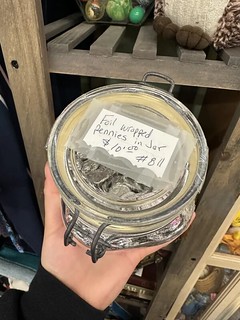
Tom Kays submitted this interesting article inspired by a social media discussion of cents wrapped in aluminum foil. Thanks! -Editor
Curses, Foiled Again?
During a recent shopping trip to the local antique mall, a shopper was perplexed to see a half-pint
mason jar full of foil-wrapped Lincoln Memorial cents. The tag read Foil Wrapped Pennies in Jar - $10.
The shopper photographed this strange treasure hoard and posted pictures on social media with the
question: Is there any reason why someone would wrap pennies in aluminum? Thanks in advance!
Social media being what it is, many comments soon rained down in response. Here are some of the
most apropos, plus others worthy of emoji awards.
- Any chance they are made of chocolate?
- One respondent says they keep all their pennies in foil. I thought it was normal. Make sure to leave the shiny side out.
- It is so ‘they' can't listen to Abe Lincoln's thoughts…No, everyone knows Abe must wear a foil pyramid hat for that. [Editor]
-
This is a
dastardly
shop keeper trick to sell a $3 jar for $10 by throwing in a half-dollars-worth of foil-wrapped pennies. Now it becomes acuriosity.
Another saysMy curiosity would make me buy it. Maybe they are all proof cents.
Maybe, but it will cost you ten dollars to find out. -
One Armenian family member confesses they bake a holiday roll for New Year's Eve, and inside
is a lucky penny, wrapped in foil, that brings good luck for the upcoming year to whoever gets
the penny.
Did you have good luck in those years you found the penny?
Well, not choking to death on the penny was nice.
- A New Jersey family tradition is to bake foil-wrapped coins in cakes. Mom always made the special Birthday person get the largest denomination coin, with the rest of the slices holding random change. Sometimes she baked in a button as a gag, wrapped in foil.
- From another respondent: Eastern European Easter puddings also hold coins wrapped in foil. Find a dime-size silver and you will be rich, find a penny and you will be poor, find a button and you will be alone in the coming year. This is some serious old-world fortune-telling so don't tempt the fates and scoff at the whammy. Eat your pudding!
-
One curmudgeon wrote that people used to wrap pennies in lots of things back in the day. Foil
was popular, or colorful paper from the local Five & Dime. In olden times folks would hang
penny bags on their belts so whenever you wanted to have a chat with a stranger you had to
reach into your penny pouch, give a wrapped coin to the fella and say
A penny for your thoughts.
Kids today don't know nothing due to all the video games and rap music. - Another says I inherited my grandpa's coin collection and heard his Mom used to wrap pennies in paper envelopes for storage. The envelopes were useful to organize coins. I think in the 1950s that envelope materials contained lots of weird chemicals, so the foil was meant to protect the coins from Sulphur and other contaminants in the paper envelopes. These may have been dumped out of their envelopes.
- Another read about metal casting as a kid and tried experiments of pressing the obverse of a coin into aluminum foil to make an impression of the design. They dripped candle wax into the mold, but unfortunately hit the carpet as well, getting in trouble for playing with fire in the house and ruining the carpet. End of experiment.
-
Another wrote that wrapping coins in foil protects them from abrasion and tarnish through
alchemy. They read in 1964, a recommendation to wrap your coins in lead or aluminum foil.
The foil should act as a
sacrificial anode
sacrificing itself to corrode first, before the more noble metals in contact with the foil.
A quick search through the Newman Numismatic Portal quickly confirmed (at least a little bit) some of
the origins of these folkloric remembrances of the public. Search the Portal for the term Aluminum
Foil
and you find:
-
Question in the ANA Numismatist of January 1993, Page 130,
I have a book on coin preservation that was published in 1964. It states that aluminum foil gives no real physical problems when properly employed and that it can be used quite liberally. Given this information, I placed a layer of aluminum foil between my coins and the cardboard of my album for protection. The coins that were in contact with the foil developed corrosion within three years. Other coins in the same album that were covered on both sides with household plastic wrap before being placed in aluminum foil were unharmed, but the cardboard and foil showed evidence of corrosion.
The upshot of the ANA answer is that having seen many foil-wrapped rolls of coins from the 1960s, that aluminum foil traps moisture and is unsuitable for use in humid climates. -
Advertisement in the Numismatic Scrapbook Magazine of April 20, 1948, Page 91,
Wrap your coins in pure Aluminum foil and you can forget tarnish worries. It is free from Sulphur or other impurities. It forms an
x 12airtight
package and gives your coins complete protection. Pure aluminum foil is economical too. A roll or 600will wrap 900 small coins and costs only $1.00 Postpaid. Order a roll today and give your coins the protection that they have always needed.
-
Coin World of April 15, 1964, Page 85,
Philadelphian Outlines Method of Making Impressions of Coins and Other Items – Quality Aluminum foil copies prove durable
by James C. Wobensmith –There has always been a desire for an accurate method of transmitting information relative to coins, tokens, and medals which would eliminate long descriptions and which would enable the person addressed to judge for himself as to the condition of a specimen which is being offered for sale, trade, or identification…
The E-Sylum readership wants to hear about your experiences with coins and foil. Tell us what numismatic foil experiments you conducted, if you still have foil-wrapped coins from olden days, and if you ever bit the lucky coin in the cake. In conclusion here is an Ode to Aluminum Foil:
The stuff of baker's dreams, once smooth and wide, bending backwards and forwards, a shining armor and silvery besides; Its jagged ends like the edges of one's heart; point at those who tear it apart, roasted and toasted, pierced and unbridled, tossed in the garbage, better yet, recycled.
So - can anyone help? What do you know about coins and foil? -Editor
References: Reddit r/coins u/HippieSauce on 1/16/2023 at:
Spotted at my local antique store. Is there a reason why someone would wrap pennies in aluminum? Thanks in advance!
(https://www.reddit.com/r/coins/comments/10czb36/
spotted_at_my_local_antique_store_is_there_a/)
THE MEDALS OF ISAAC SHELBY
Dennis Tucker published a nice article by Robert W. Shippee on medals of Kentucky Governor Isaac Shelby. Here's a short excerpt and some images - see the complete article online. -Editor
Moritz Fürst, a talented, if mercurial, engraver and die sinker, had the job of preparing many of the dies needed to strike the medals awarded to senior Army and Navy officers for their heroics in the War of 1812. Because of his work backlog, he did not finish preparing the dies used to strike the Shelby medal until May 1822. Fürst created the obverse die based on a portrait or sketch of Shelby but used a design prepared by the famous portrait painter Thomas Sully to sculpt the reverse die.
The reverse of the Shelby medal depicts one of the most stunning battle scenes ever to appear on any early American military medal, rivaling the work of leading French medalist, Augustin Dupré, on the Daniel Morgan at Cowpens medal. Sully and Fürst made a point of showing the death of Tecumseh within the battle scene.
The dies were turned over to the U.S. Mint in May 1822, as mentioned, but further delays ensued. The gold medal itself, measuring 65 mm in diameter (just over 2.5 inches), was not produced by the Mint until March 1824. It was then promptly presented to Shelby at his home in Kentucky, more than a decade after the battle and barely two years before his death.
Shelby bequeathed his gold medal to his wife, who, in turn, left it to their son, Isaac Jr., upon her death in 1833. He (or perhaps a descendant of his) donated the medal to the Kentucky Historical Society several decades later. The medal was stolen from the KHS in the mid-1930s, and it is probably lost forever.
The medal pictured here is from the author's collection: one of a very small number of surviving white metal examples. The collaring mark or witness line
on the edge of the medal at 12 o'clock and the perfect state of the dies indicate that this is a very early striking (circa 1824) or, conceivably, an example used to test the dies before the gold specimen was struck. While the War Department ordered a few dozen white metal examples in 1825 and 1828, there is some uncertainty whether these orders were ever actually filled since so few white metal specimens are around today.† There is no evidence that any impressions were struck in silver, but there are on the order of several dozen later strikes in bronzed copper.
To read the complete article, see:
From the Colonel's Desk—Isaac Shelby: The Man, the Medal, the Mysteries
(https://news.coinupdate.com/from-the-colonels-desk-isaac-shelby-the-man-the-medal-the-mysteries/)
CAMBRIDGE ACTIVIST'S VENEZUELAN MONEY DRESS
Money can make a fashion statement as well as a political one, as with last week's item on Miss El Salvador's bitcoin outfit. Now an eco-activist in Cambridge, England has made a dress of Venezuelan banknotes. The photo on the steps of the Fitzwilliam shows posters for the current "Defaced!" exhibit on political slogans and money. -Editor
Cambridge-based Katherine Hasegawa organised an art activism performance to raise awareness of the situation at the Orinoco mining arc in the Venezuelan Amazon.
A former Anglia Ruskin University (ARU) student, who studied international business management, she most recently delivered her ‘ARTivist' message at the Fitzwilliam Musuem and the Cambridge Judge Business School.
 In 2019 Katherine made a folkloric dress from Venezuelan bank notes to raise awareness of the economic crisis in her country.
In 2019 Katherine made a folkloric dress from Venezuelan bank notes to raise awareness of the economic crisis in her country.
Now Katherine, with the help of her friend Dr Michelle Darlington, head of knowledge transfer at Cambridge Centre for Social Innovation, has made another money dress to highlight ecocide in the Amazon, where illegal gold mines are violently displacing indigenous populations and causing deforestation.
Katherine, who is open to other collaborations, said: The banknotes used to make the ‘ecocide money dress' lost their value because of the mismanagement of my country's resources by a small group of men who govern Venezuela. Just as these men have destroyed the economy of my country in less than two decades, if they are not stopped now, they will also succeed in destroying the green lungs of the world – the Amazon.
Found via News & Notes from the Society of Paper Money Collectors (Volume VIII, Number 31, January 17, 2023). -Editor
To read the complete article, see:
Katherine's money dress events in Cambridge highlight issue of ecocide in the Venezuelan Amazon
(https://www.cambridgeindependent.co.uk/news/money-dress-highlights-the-destruction-of-the-amazon-9292862/)
To read the earlier E-Sylum article, see:
EXHIBIT: DEFACED! MONEY, CONFLICT, PROTEST
(https://www.coinbooks.org/v25/esylum_v25n41a12.html)
MISS EL SALVADOR'S GOLDEN BITCOIN OUTFIT
(https://www.coinbooks.org/v26/esylum_v26n03a28.html)
LOOSE CHANGE: JANUARY 22, 2023
Here are some additional items in the media this week that may be of interest. -Editor
Mike Markowitz passed along this story of museum director convicted of swapping fake coins for real ones. Thanks. -Editor
he Court of Cassation upheld a decision by the Amman Court of Appeals to imprison a former Department of Public Antiquities museum director for five years. He was convicted of replacing 5,972 antique coins with fake ones.
Of the coins, 1,249 were gold, 4,478 were silver, and 245 were bronze, Al-Ghad News reported.
The value of the original coins was estimated at $1 million. The court fined the defendant a sum equaling the value of coins, in addition to trial expenses and any other expenses.
The former official was charged with a felony of embezzlement, and a misdemeanor of counterfeiting and falsifying antiquities.
The committee made an inventory of the artifacts, and it was found that some of the missing coins from the Jordan Antiquities Museum were sold outside the country.
To read the complete article, see:
Ex-museum director sentenced to prison for counterfeiting antique coins
(https://www.jordannews.jo/Section-109/News/Ex-museum-director-sentenced-to-prison-for-counterfeiting-antique-coins-26550)
Paul Horner passed along this article about a Massachusetts counterfeiter. Thanks, -Editor
 A Massachusetts man minted nearly half $1 million in counterfeit bills, federal officials said. He's just been sentenced to prison.
A Massachusetts man minted nearly half $1 million in counterfeit bills, federal officials said. He's just been sentenced to prison.
The man, a 34-year-old resident of Quincy, a Boston suburb, admitted to participating in an illicit manufacturing operation that was based in his home, according to a Jan. 19 news release from the U.S. Attorney's Office for Massachusetts.
An attorney for the man could not immediately be reached for comment by McClatchy News.
On a weekly basis, he admitted to bringing other individuals into his home to produce the fake bills, officials said.
In sum, 4,000 counterfeit $100 bills were traced back to his residence using serial numbers, according to the release.
To read the complete article, see:
Man manufactured thousands of counterfeit $100 bills in his MA home, feds say
(https://news.yahoo.com/man-manufactured-thousands-counterfeit-100-234505903.html)
Bibliophiles and collectors of all stripes might get a kick out of this - literal "red tape" can now be yours. -Editor
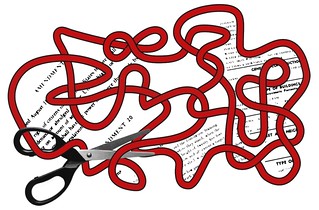 For 25 years, the National Archives has been working to rid itself of government red tape — through its gift shop.
For 25 years, the National Archives has been working to rid itself of government red tape — through its gift shop.
We're talking about actual, physical tape: the red-dyed lengths of fabric that were used from the 1780s to the 1980s to bundle many of the nation's documents, and that, according to the Archives, gave rise to red tape
as shorthand for bureaucratic entanglements.
The tape
the agency is selling off isn't adhesive tape; it's a soft, flat and narrow woven cotton that's snipped from a spool. Red tape eventually was abandoned for white or undyed tape because of its tendency to bleed, but in its heyday, the government used vast amounts of the red stuff. For instance, in 1864, the War Department headquarters purchased 154 miles of red tape, according to the Archives. And even in 1943, the Treasury Department bought nearly 123 miles, a Washington Post article from the time noted. Quite a bit of that mileage landed at the National Archives among its billions of paper records.
A volunteer in the 1990s, Robert E. Denney, was unbundling Civil War service records to be microfilmed when he saw an opportunity with a curio that had outlasted its usefulness. In 1997, the store began selling clippings for $5, and its red-tape business is bigger than ever. It has expanded into a line of items, such as shadow boxes with tape tied around a Confederate war bond, as well as inches of fabric encased in acrylic paperweights and pieces bottled in jewelry, including earrings, cuff links and pendants.
To read the complete article, see:
They're getting rid of ‘red tape' in Washington. Literally.
(https://www.washingtonpost.com/magazine/2023/01/16/red-tape-in-washington/)
In the collecting-other-collectibles department, here's an interesting story about an NFL linebacker who retired to trade Pokémon cards. He sold this "Illustrator" card for $672,000, just 11 days before announcing his retirement. -Editor
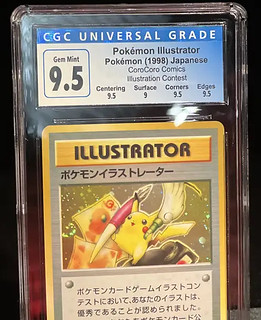 When I started collecting again about two years ago, I found streamers on Twitch and different platforms doing box breaks.
When I started collecting again about two years ago, I found streamers on Twitch and different platforms doing box breaks.
A box break is where you take a sealed product of Pokémon with 36 packs — 11 cards in each pack — and people bid to win a certain pack hoping it's one of the 12 that have holo foil cards in them, which are the expensive cards.
It was exciting to watch, and I thought: Why don't I do this?
One of my connections from Stanford University, Jeff Jordan, who works at Andreessen Horowitz, recommended I get involved with a company they'd just backed called Whatnot, a retail-entertainment app, which offers a livestream-shopping platform where you can buy or sell a crazy range of items.
To read the complete article, see:
I quit the NFL to trade Pokémon cards. I was making just as much as playing football, so I decided to do something I love.
(https://www.businessinsider.com/i-quit-the-nfl-to-sell-pokemon-cards-blake-martinez-2023-1)
You knew the "box break" gambling angle was coming to numismatics, didn't you? I'm surprised it took so long. A full-page ad in the February 2023 COIN World announces "a new and exciting way to collect coins.... VaultBox was inspired by the thrill of opening sports and trading card packs, and the excitement of chasing the biggest hits."
My guess is that early buyers will have much better odds of "winning" some valuable finds, because news of their "good fortune" will help attract future buyers. Kind of like the poor slob who "wins" the giant teddy bear early in the day at the carnival, and has to carry it around the park the rest of the day. Whether he knows it or not, he's shilling advertising for the house that will not be giving away any more giant bears that day.
-Editor
To register for VaultBox Series 1 Notifications, see:
https://finestknown.com/
FEATURED WEBSITE: FRENCH SCULPTURE CENSUS
This week's Featured Web Site is suggested by Scott Miller.
French Sculpture Census, French sculpture 1500-1960 in North American public collections
Scott writes:
"The number of French medals included is impressive."






